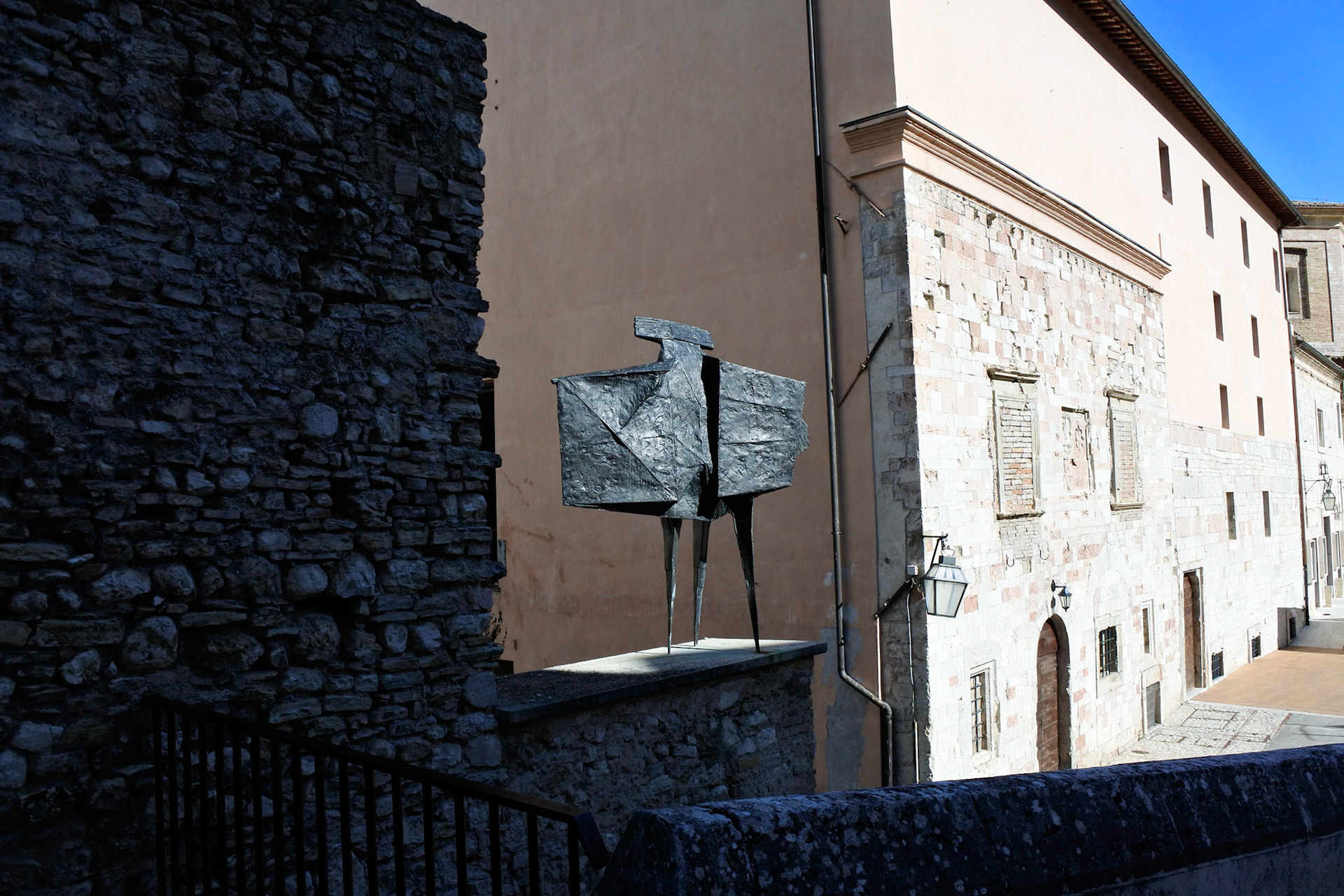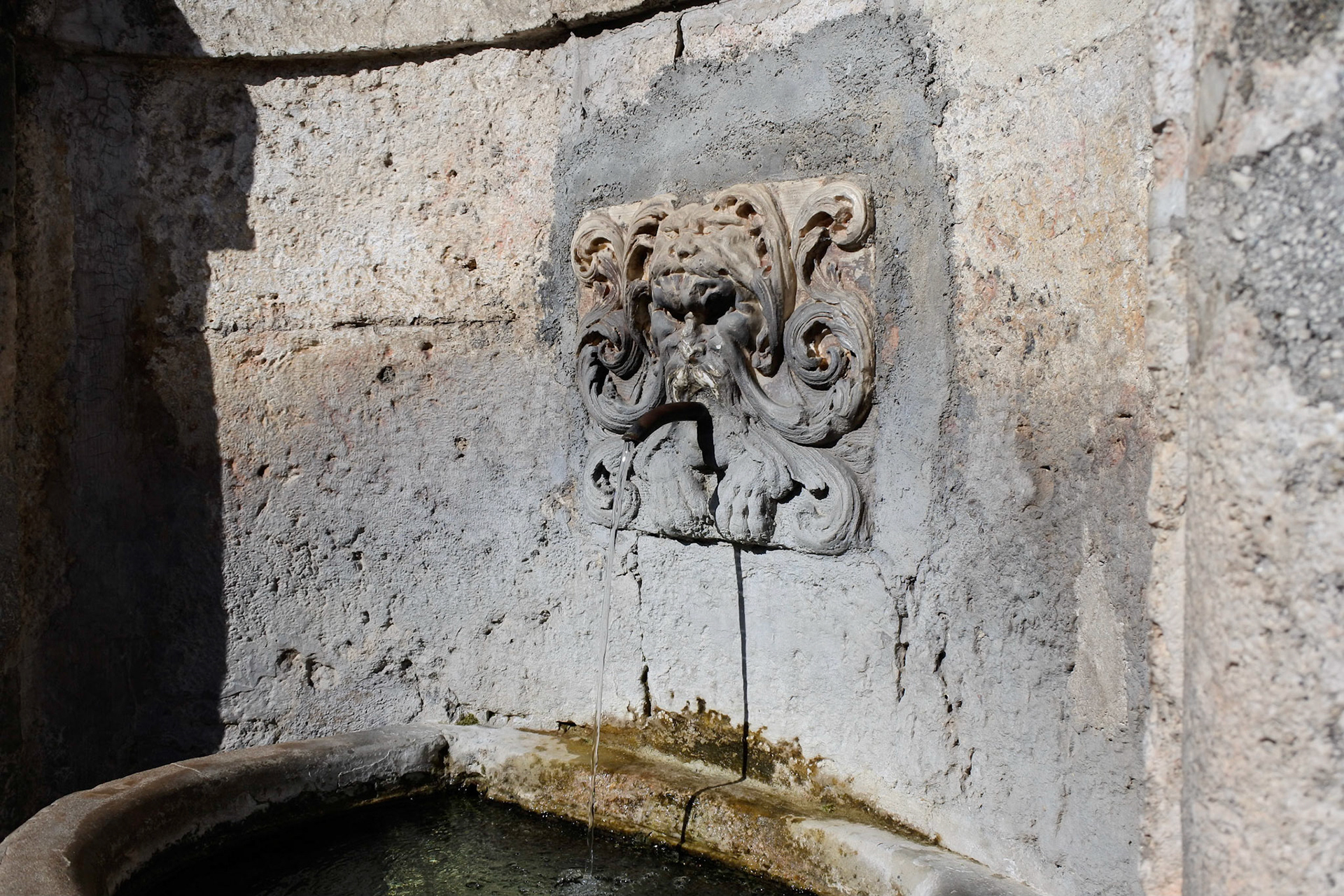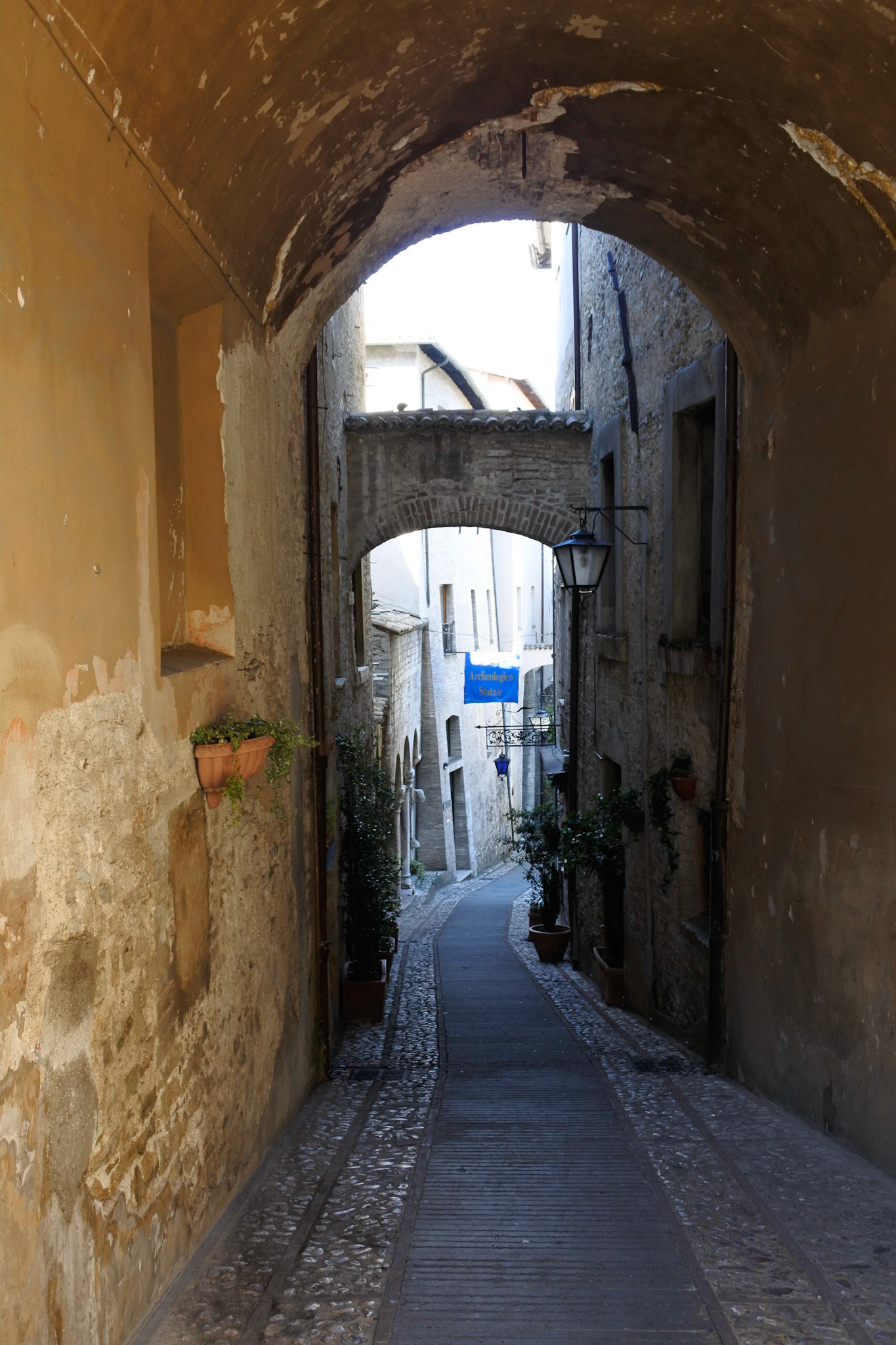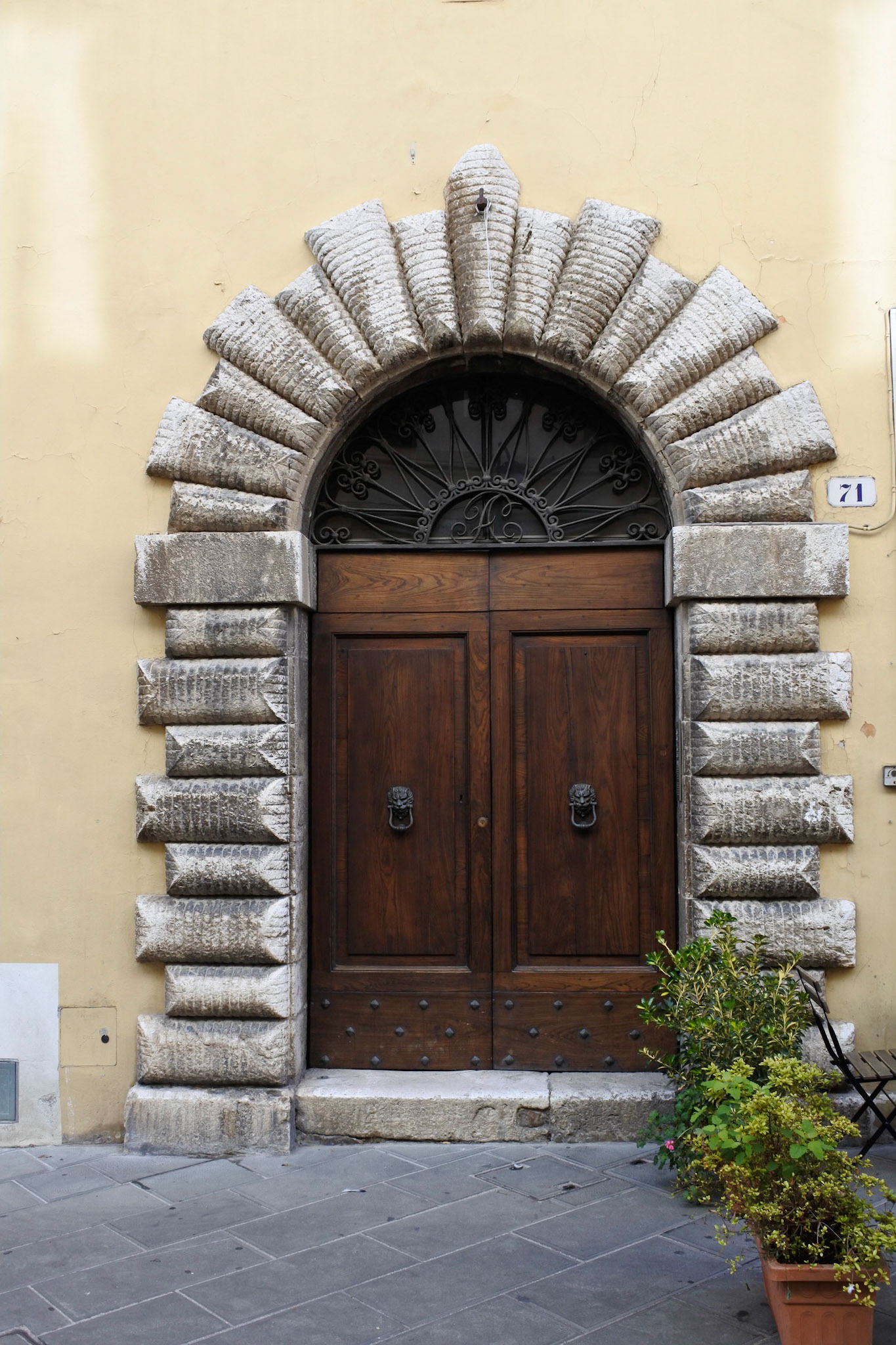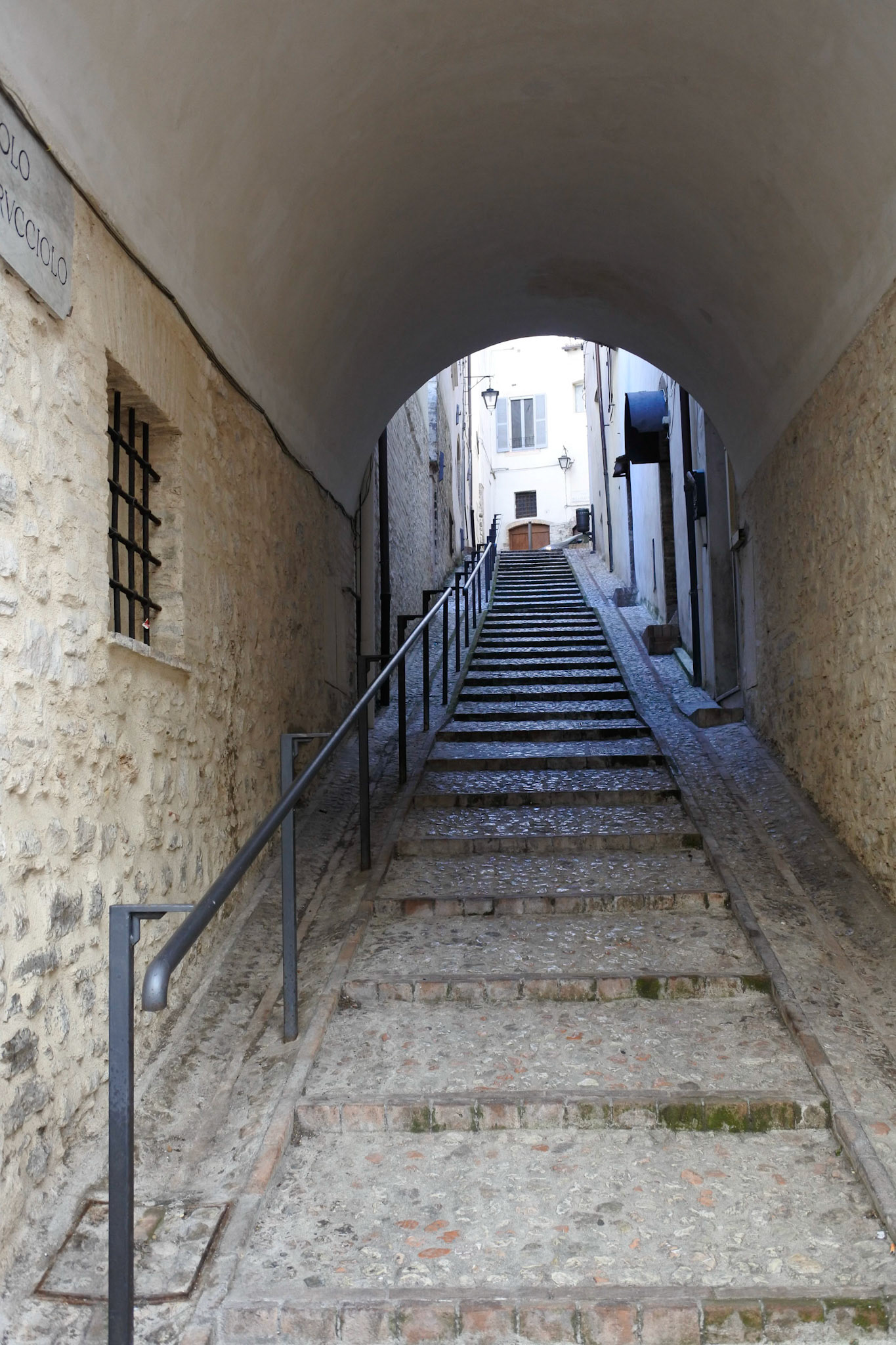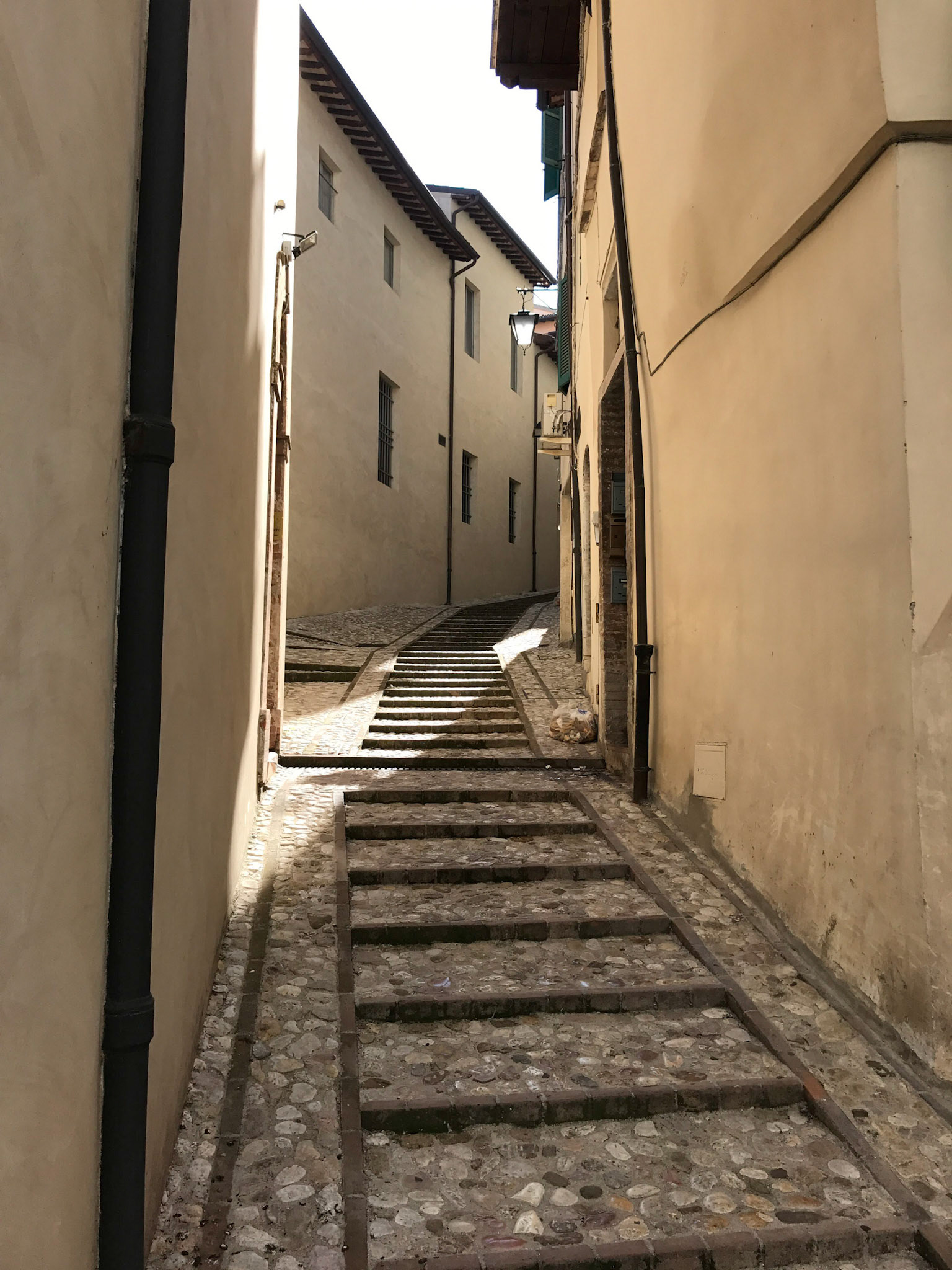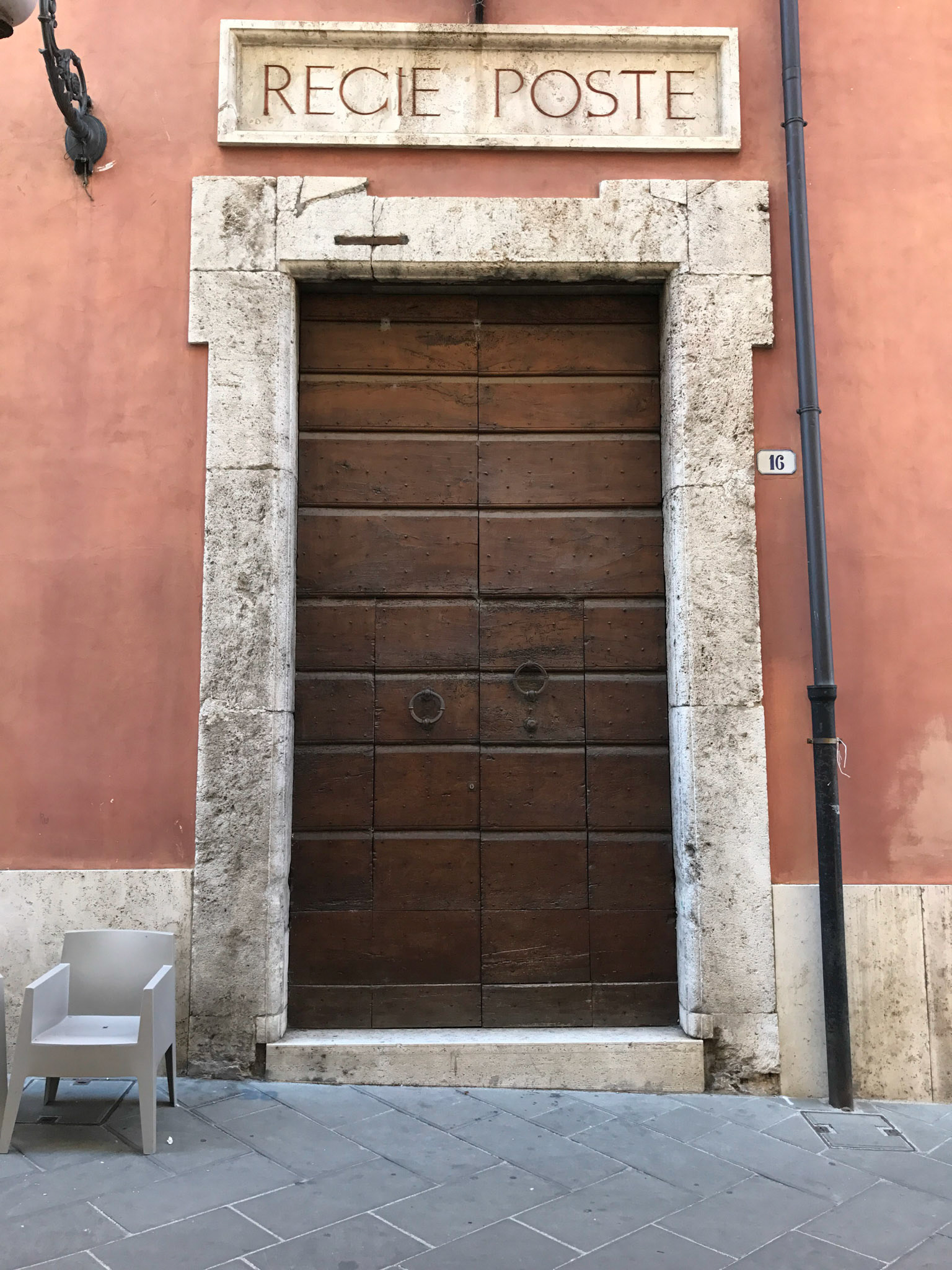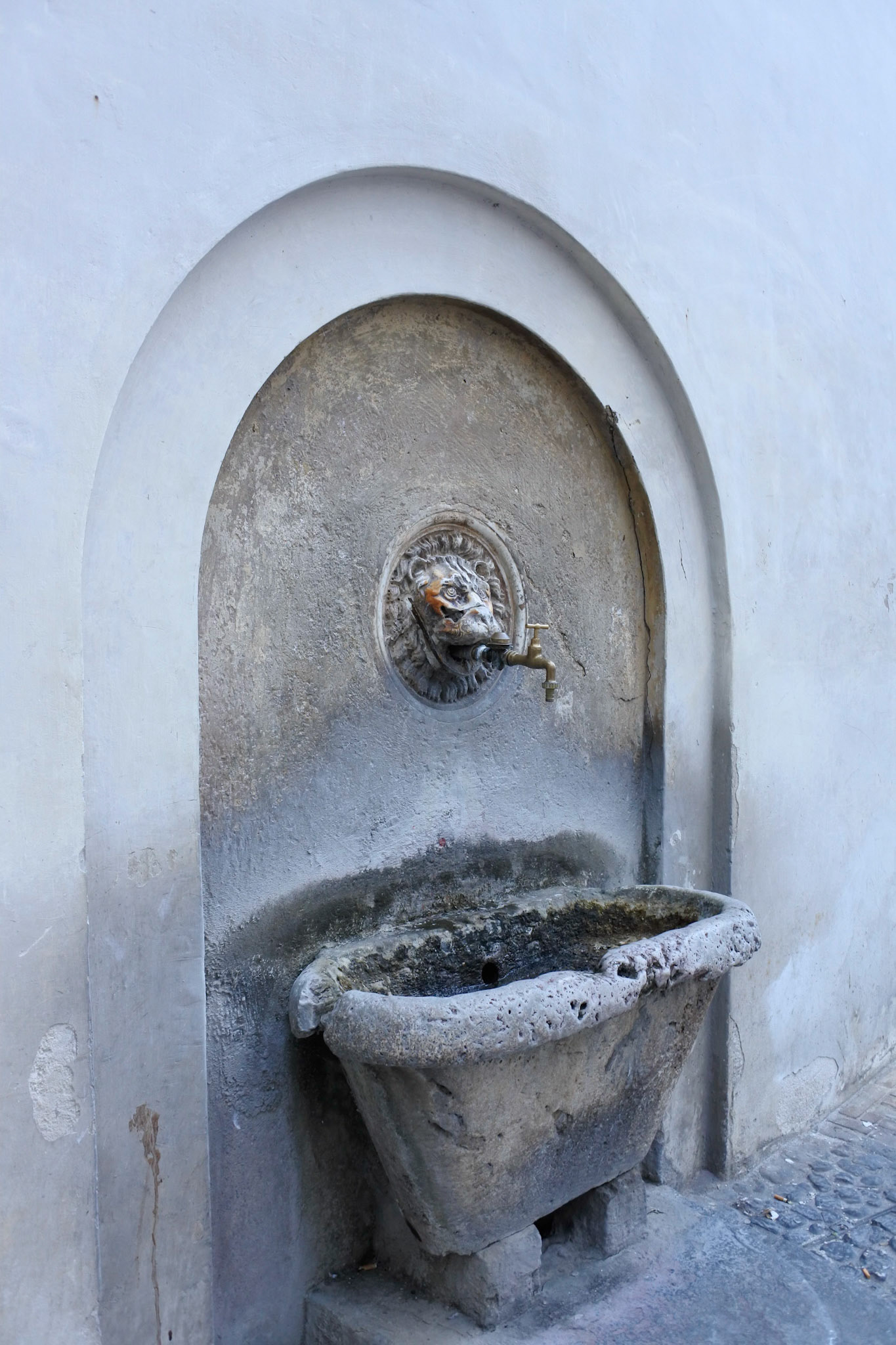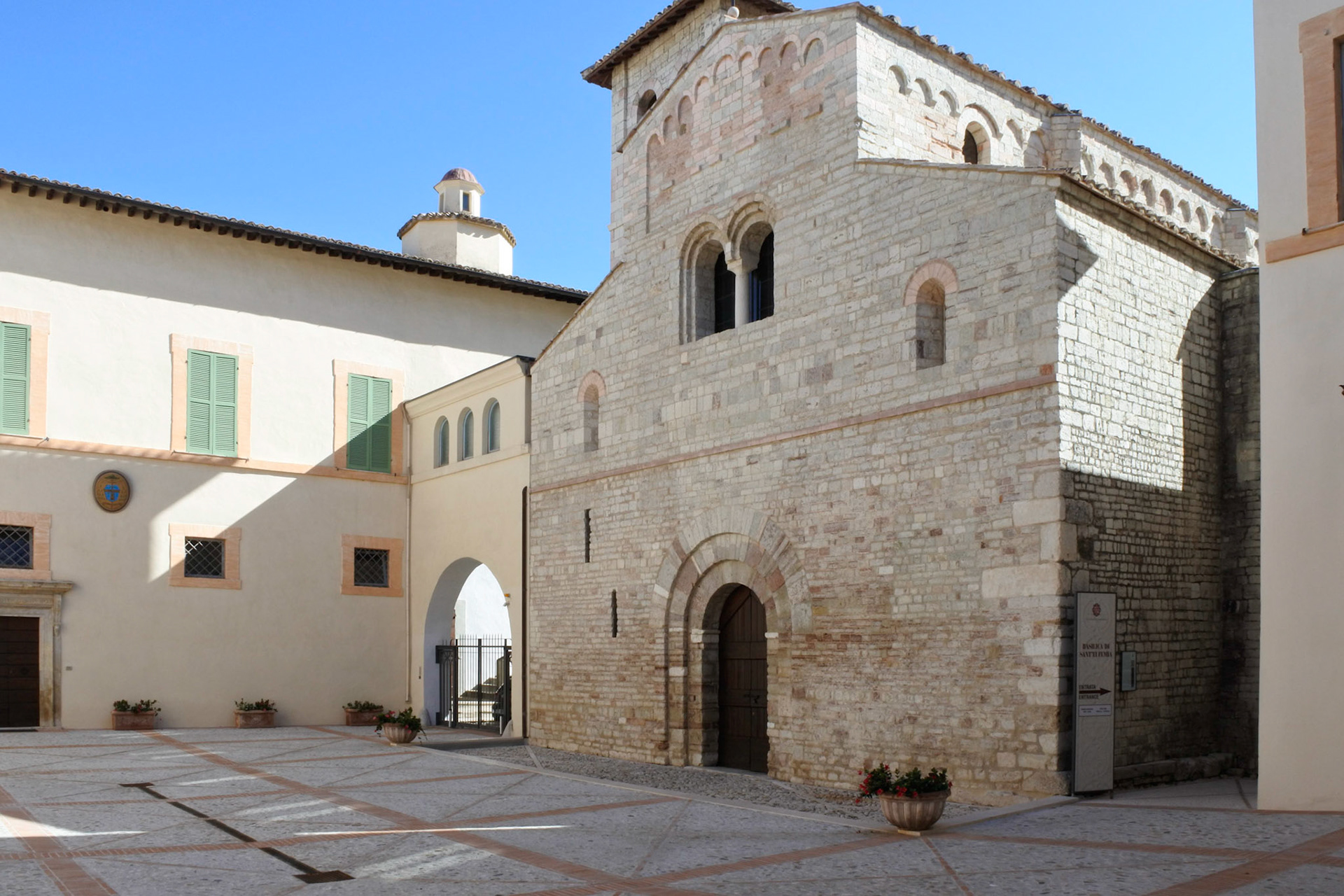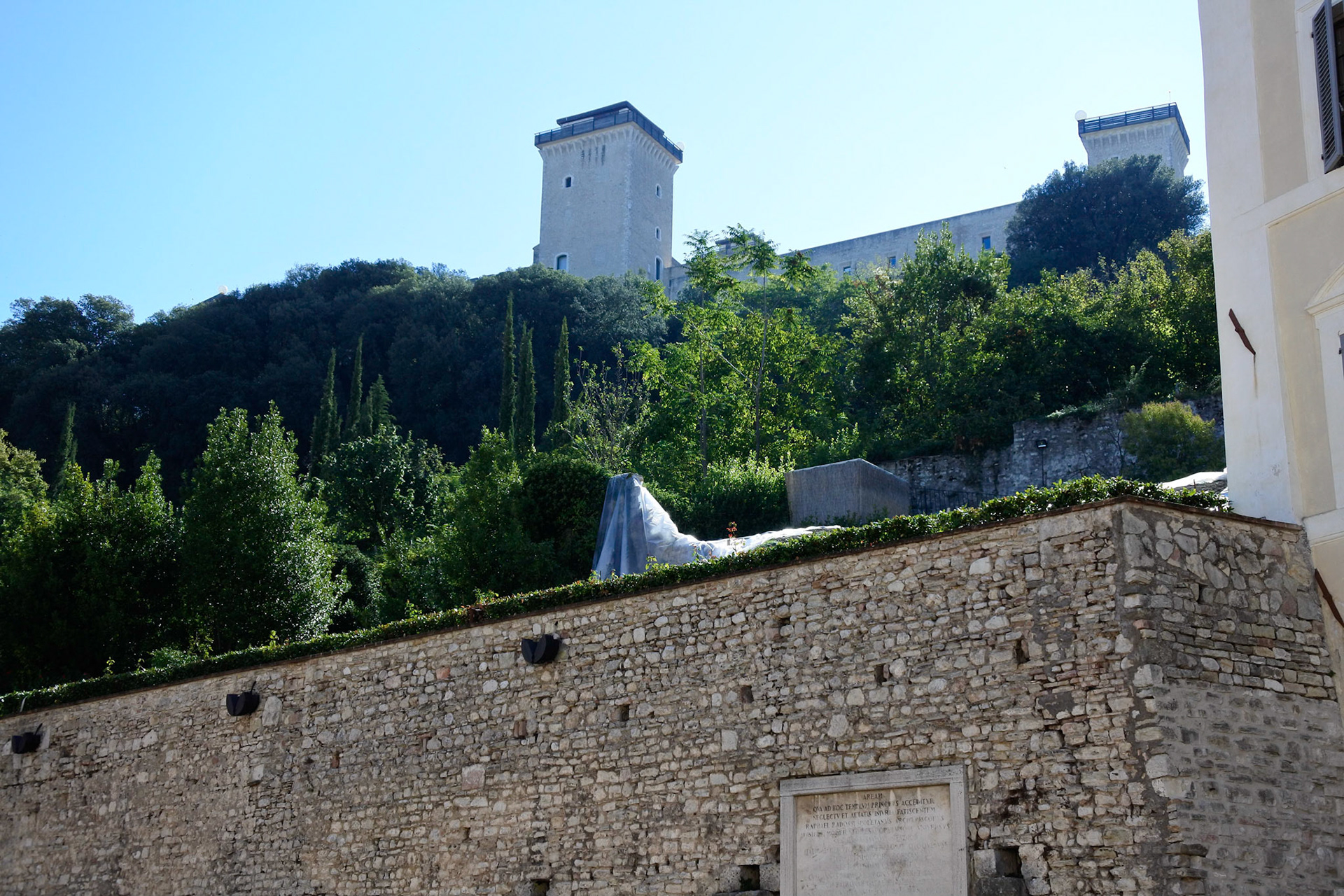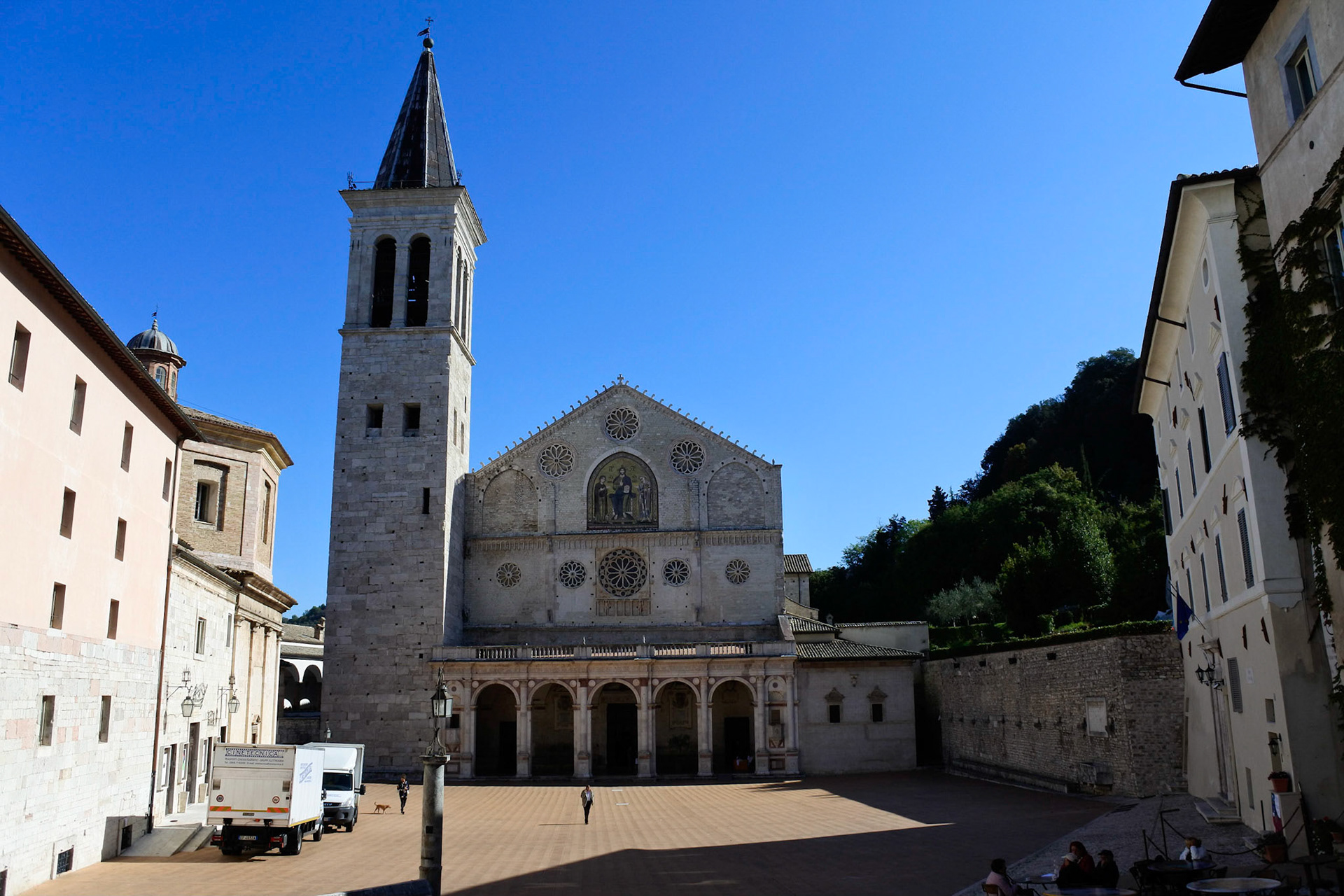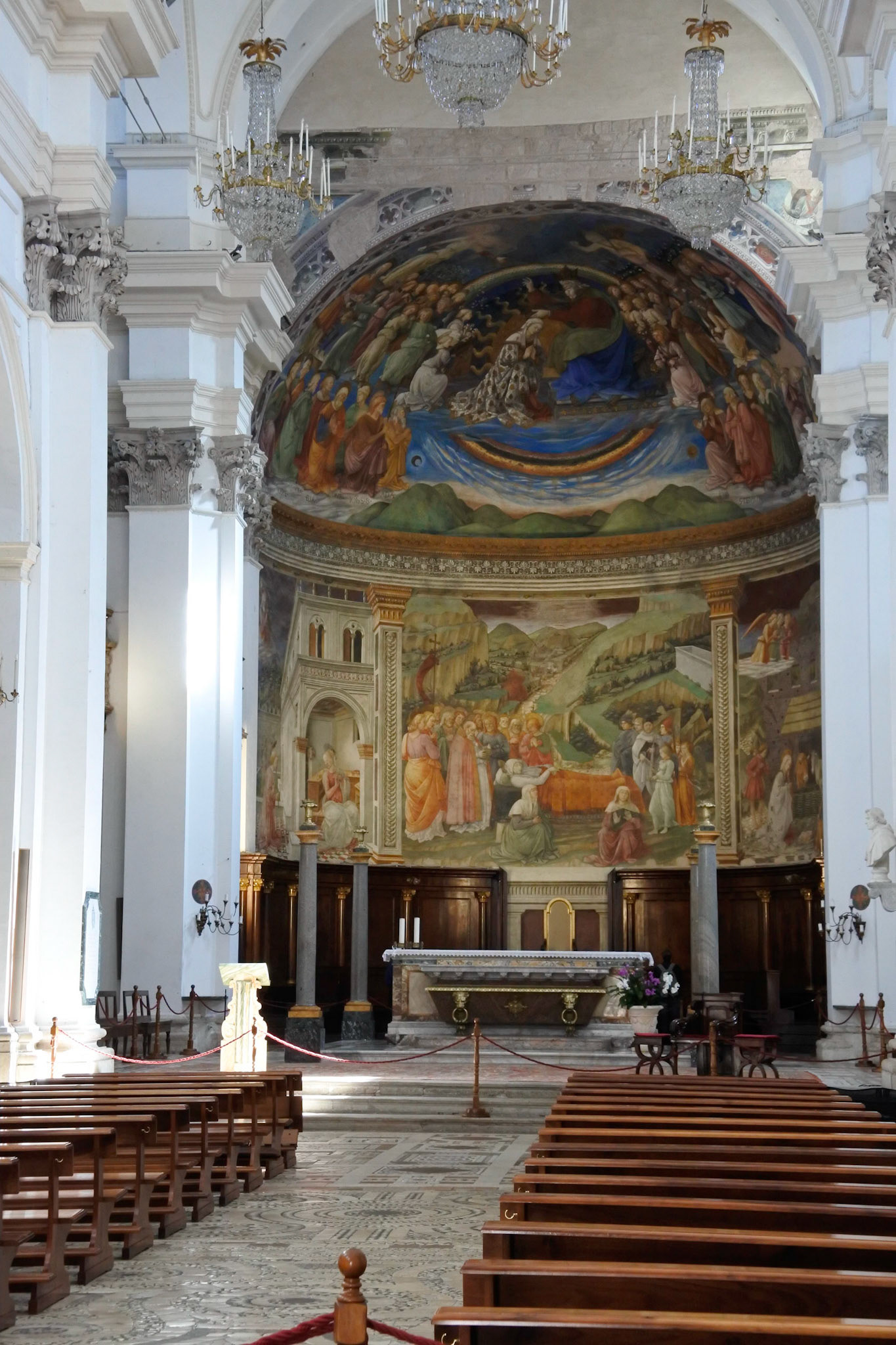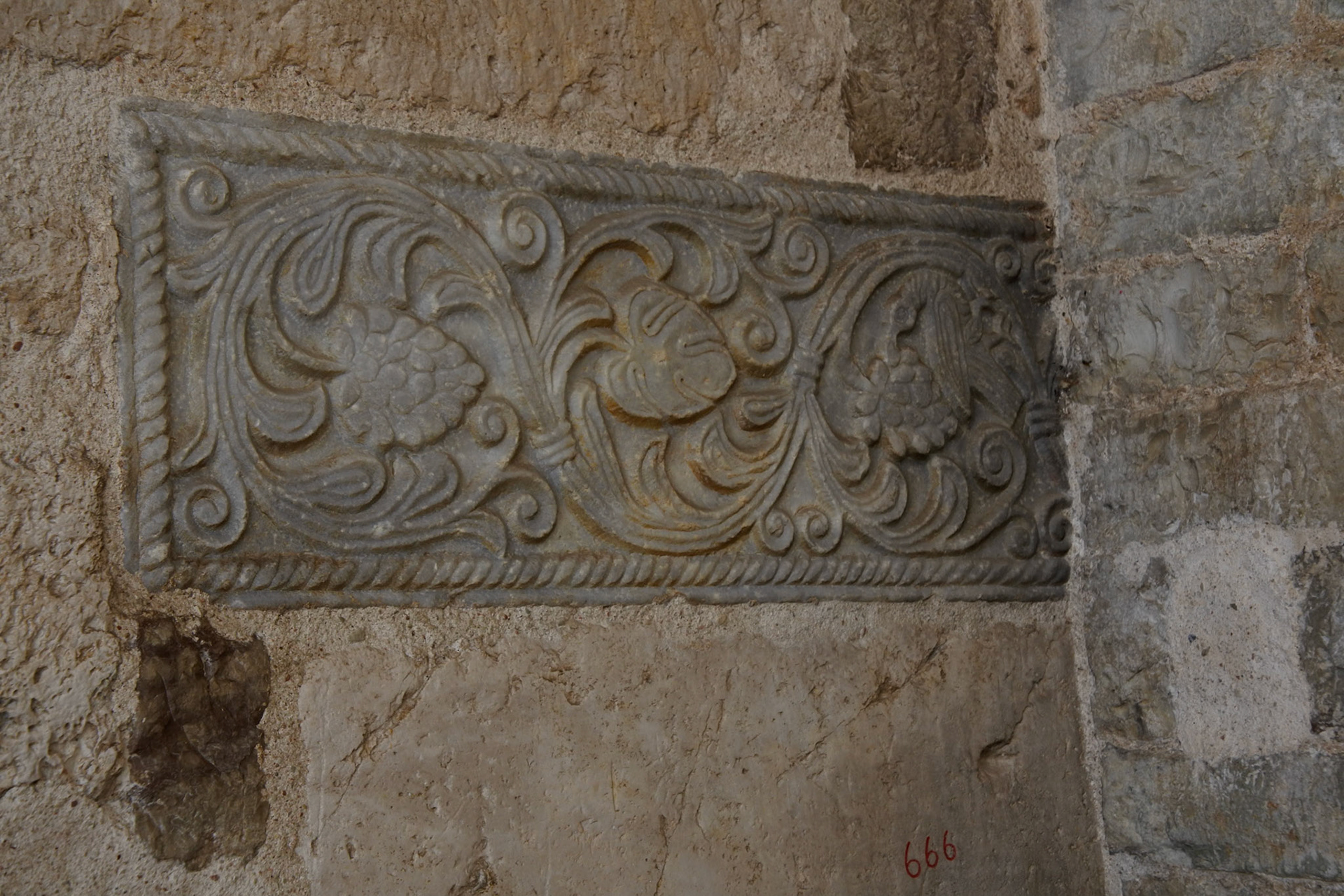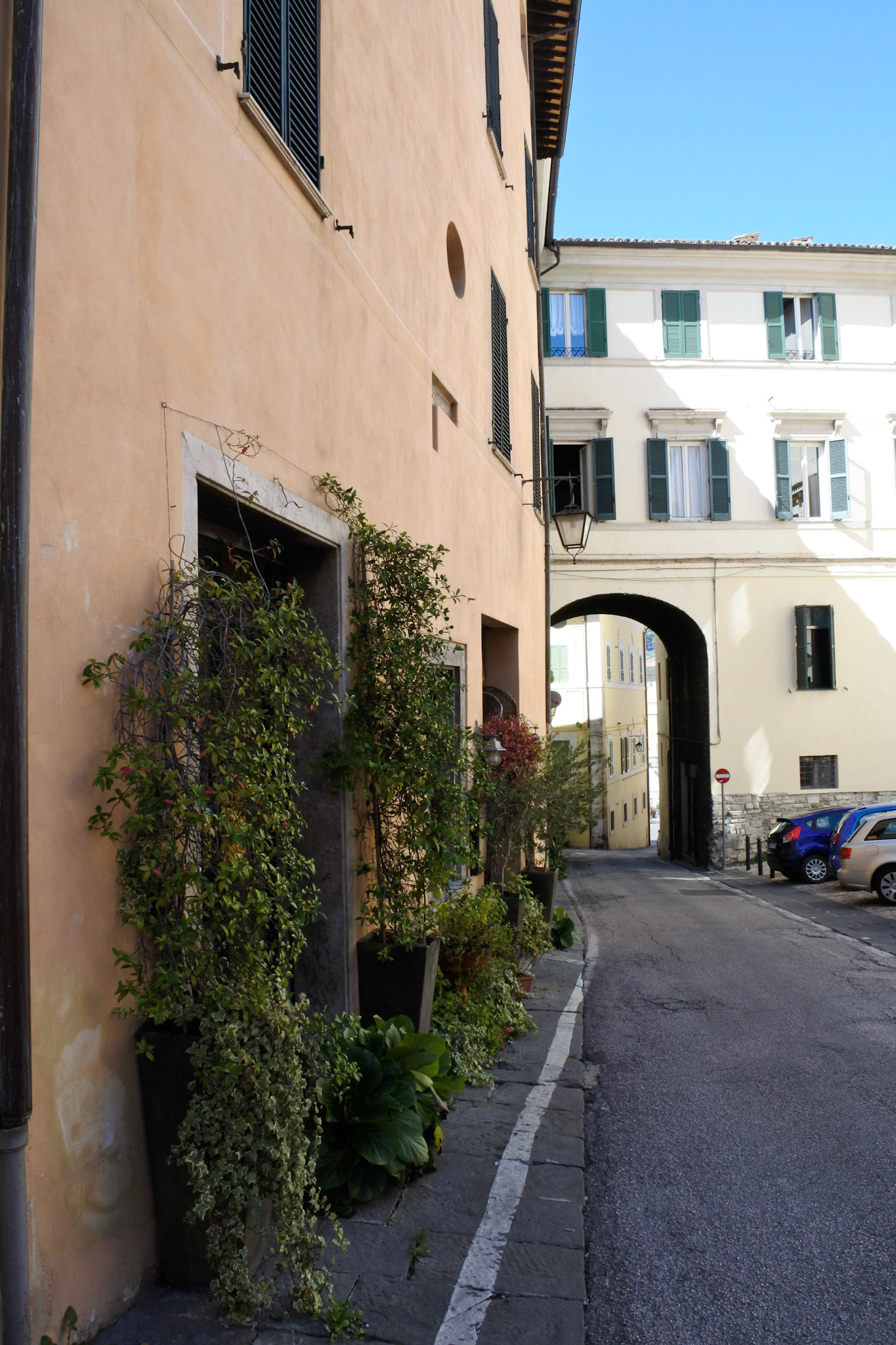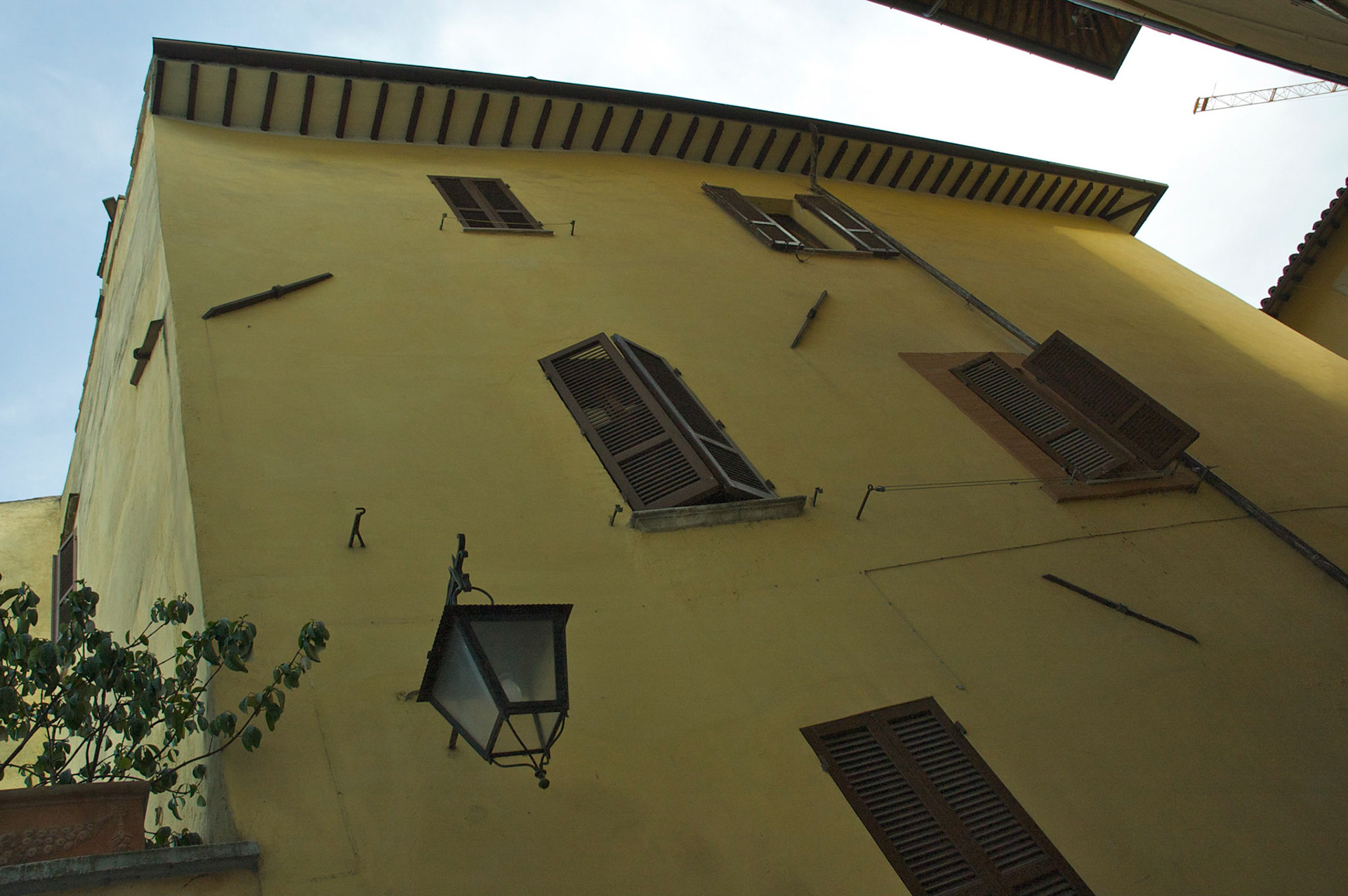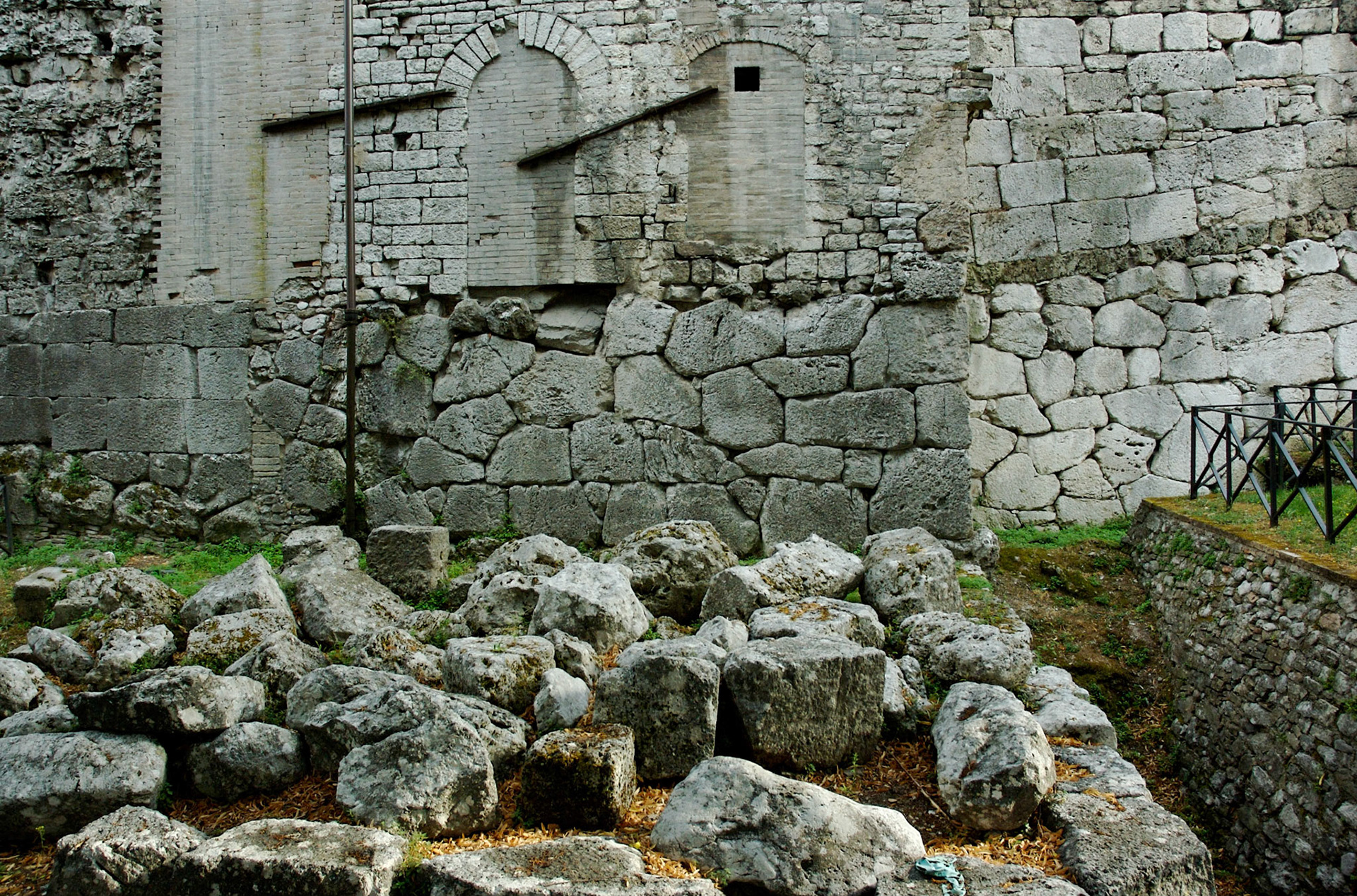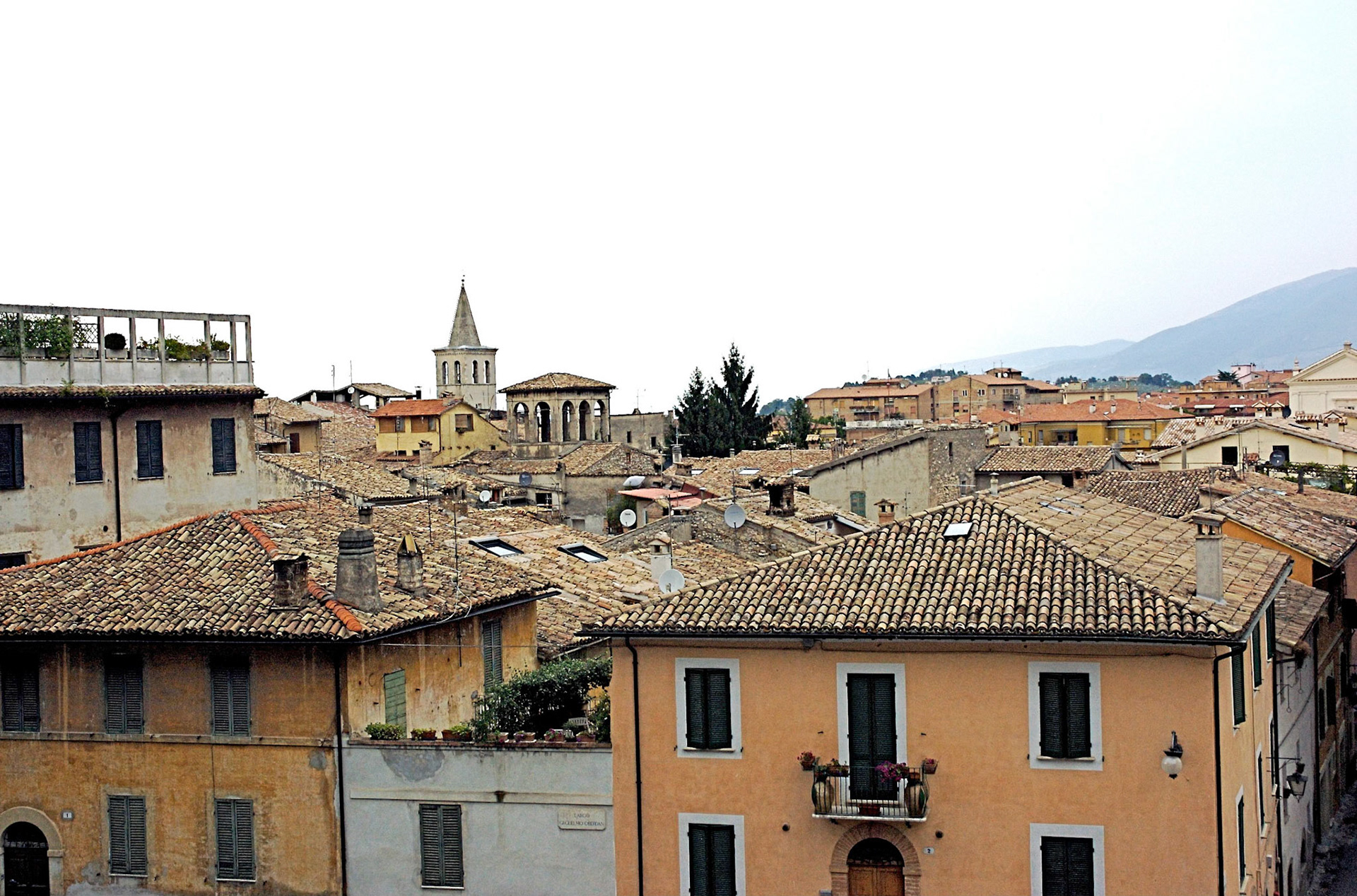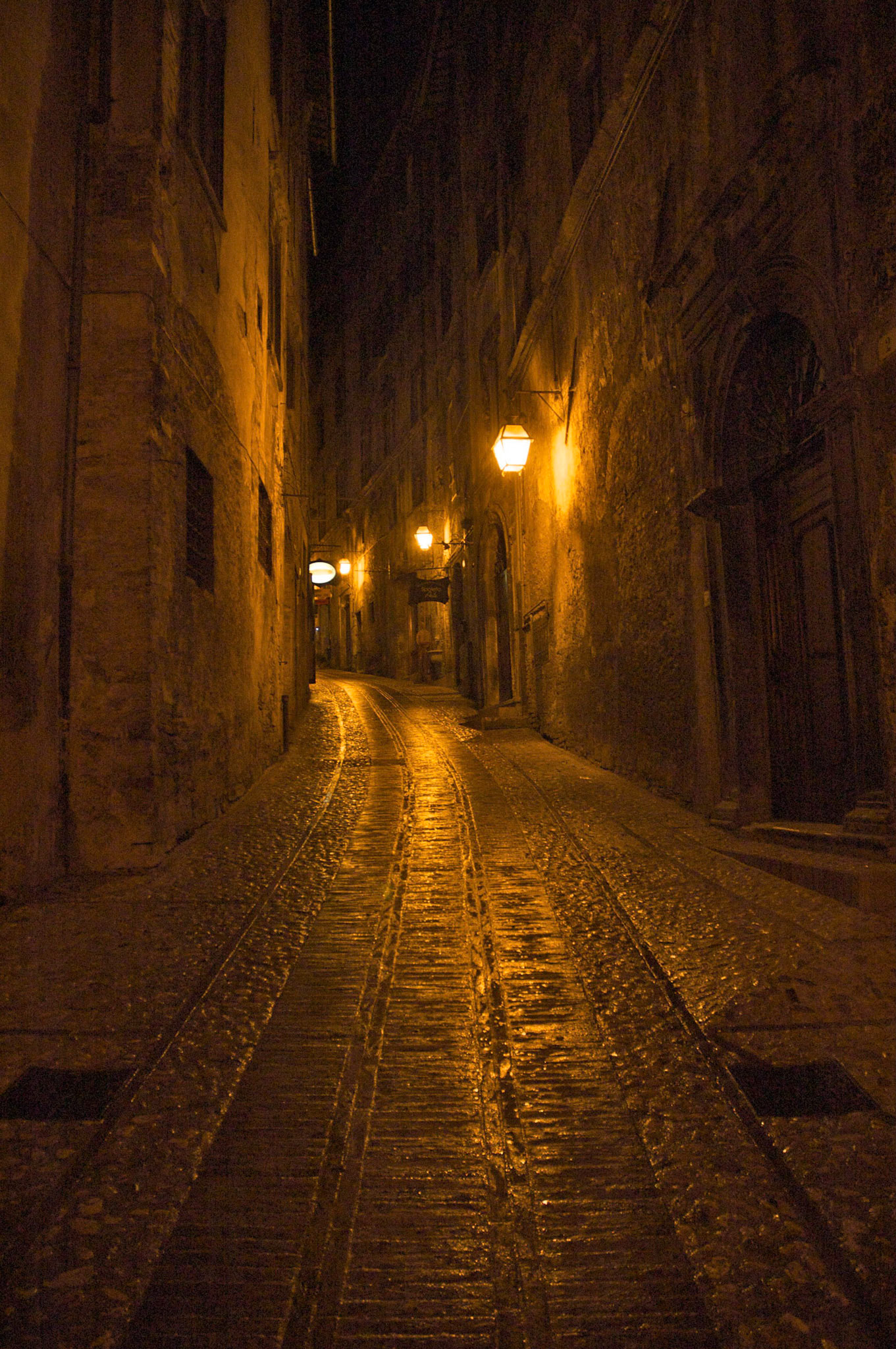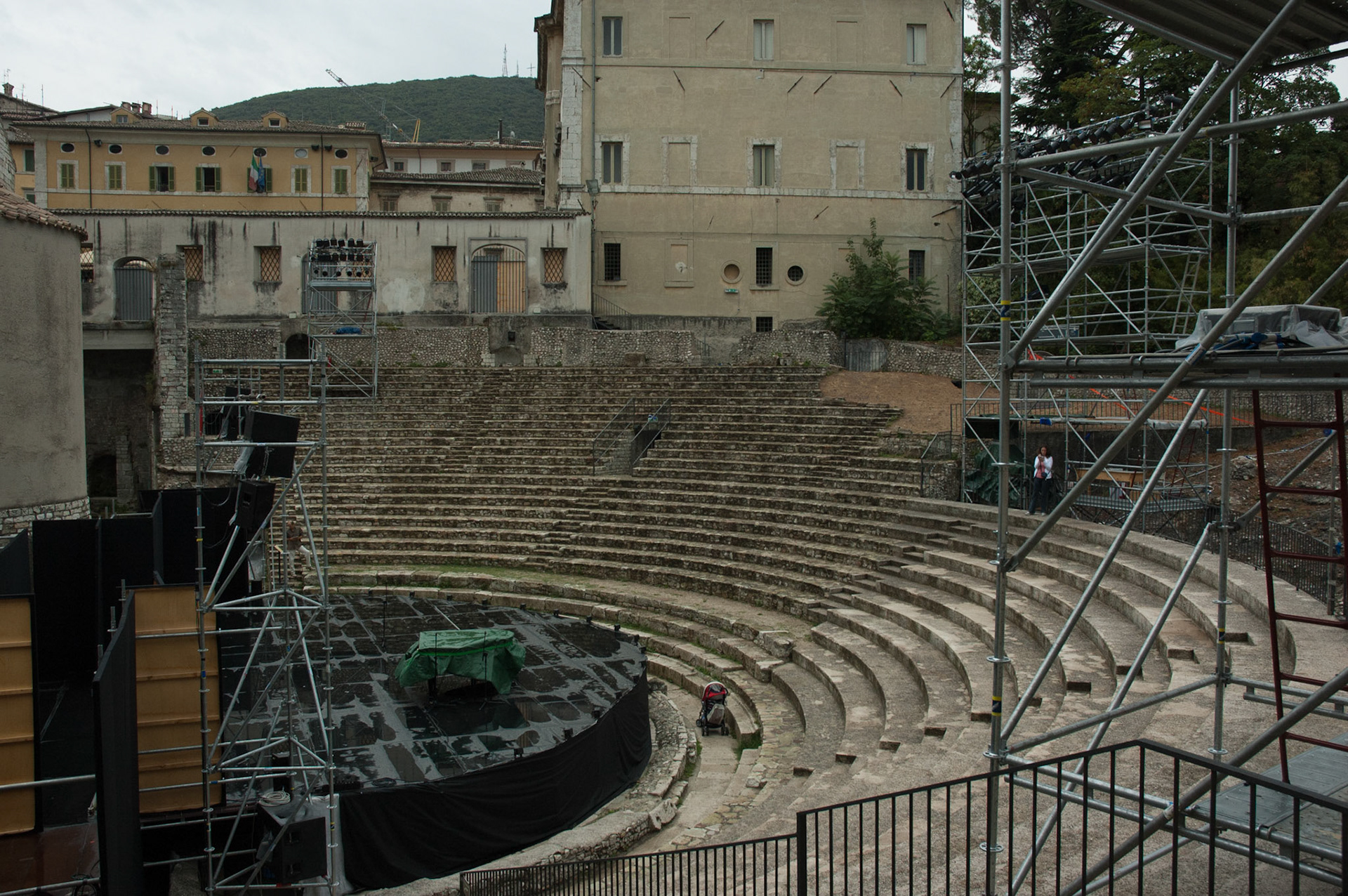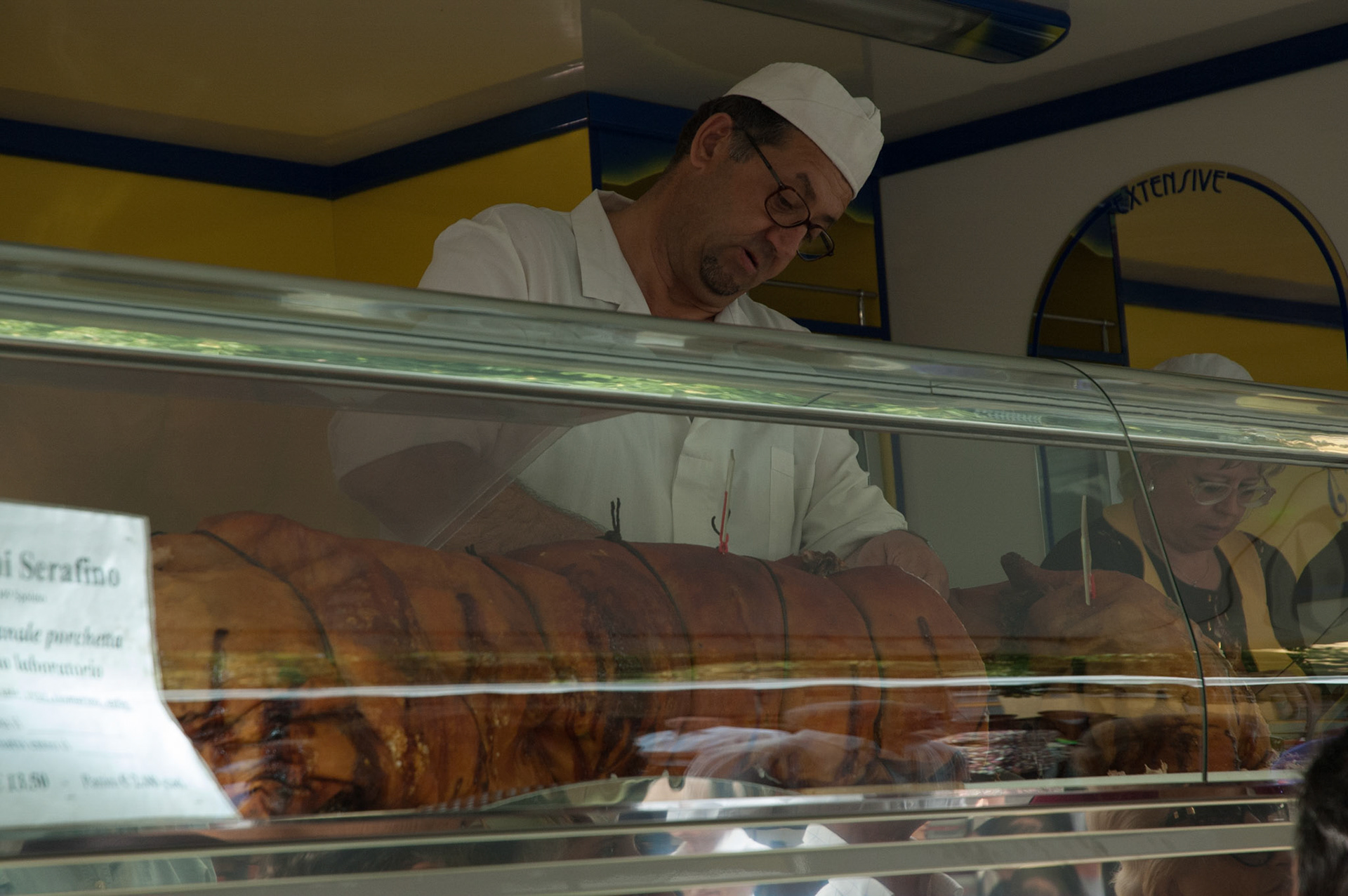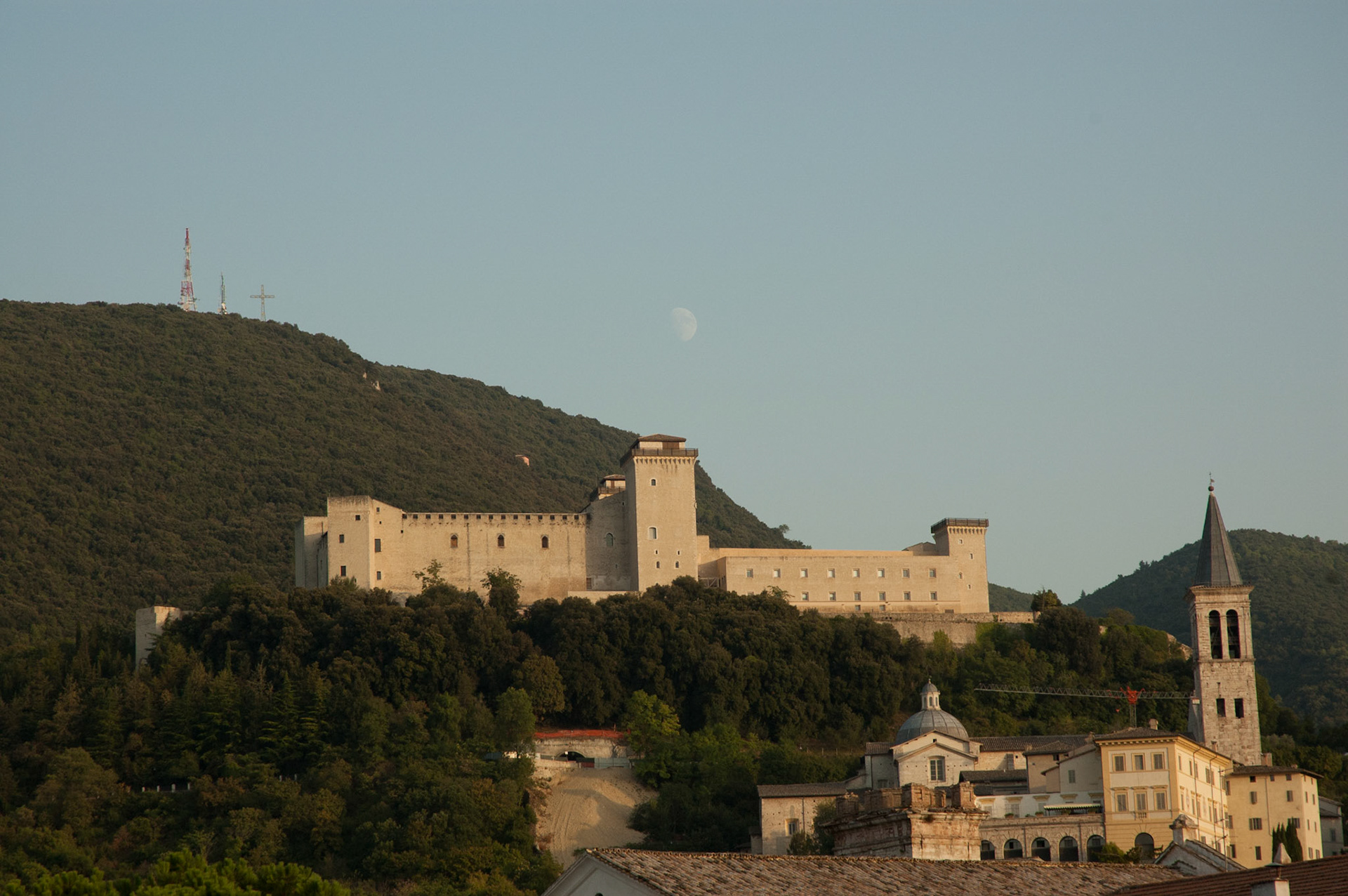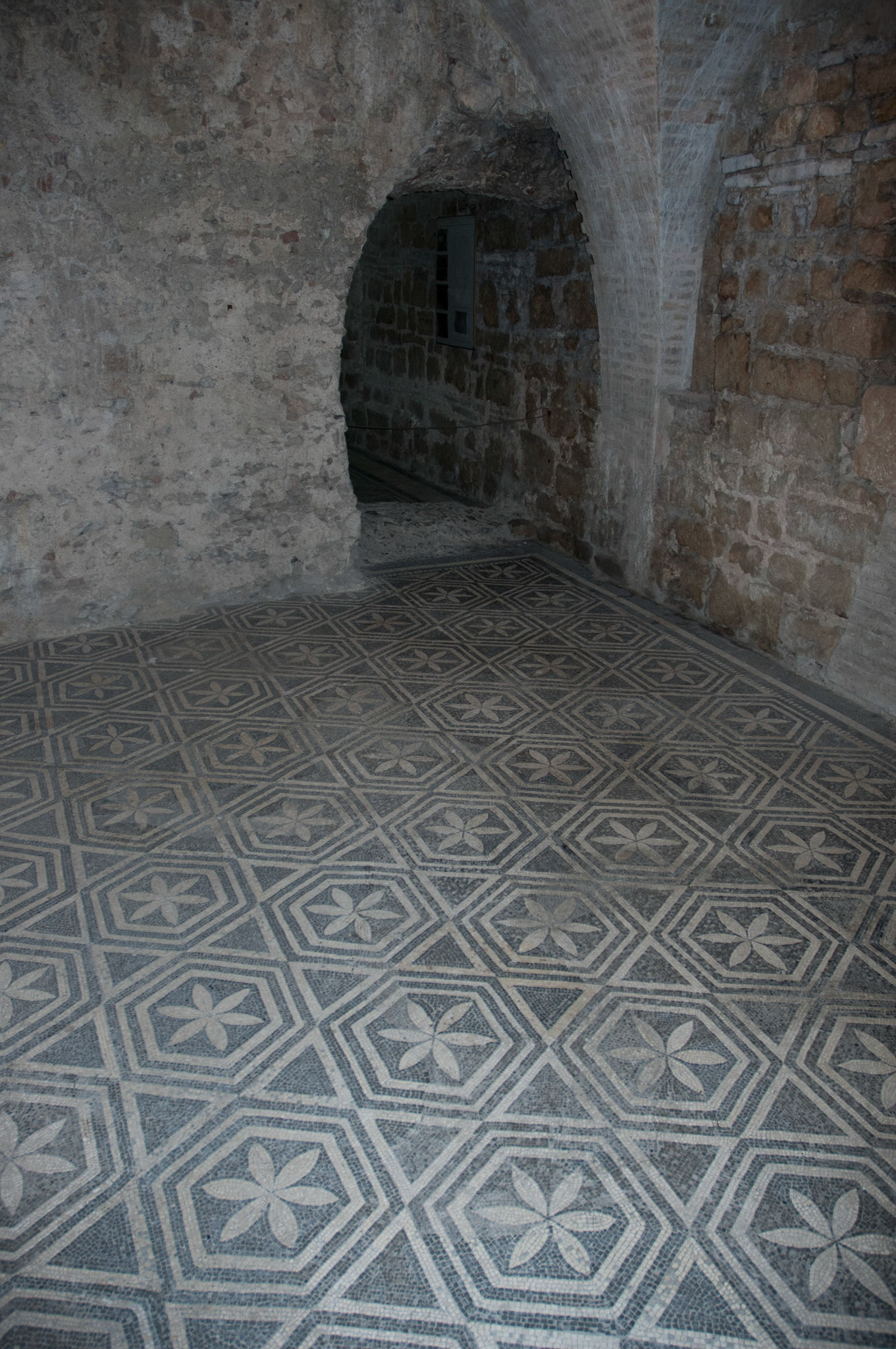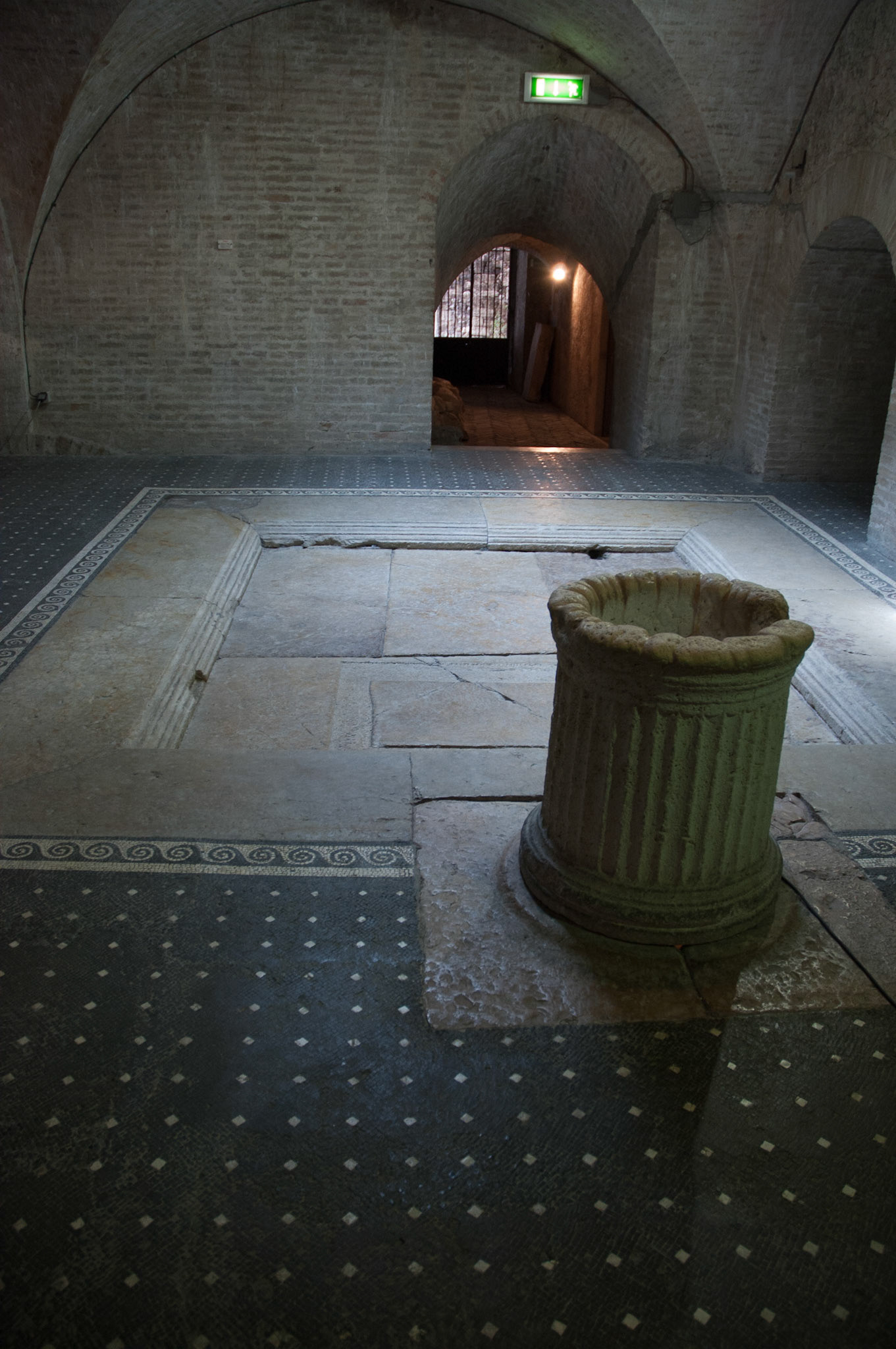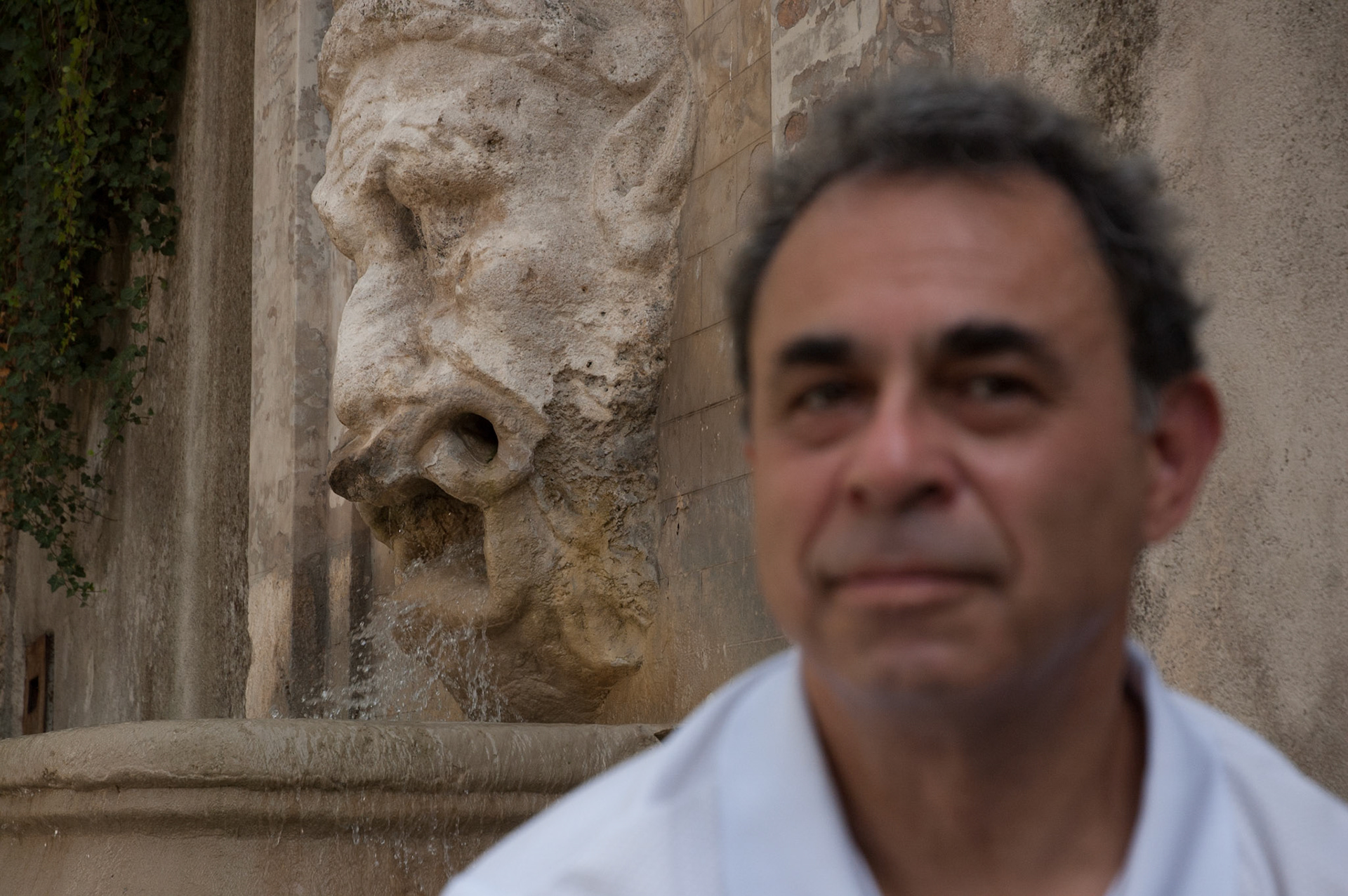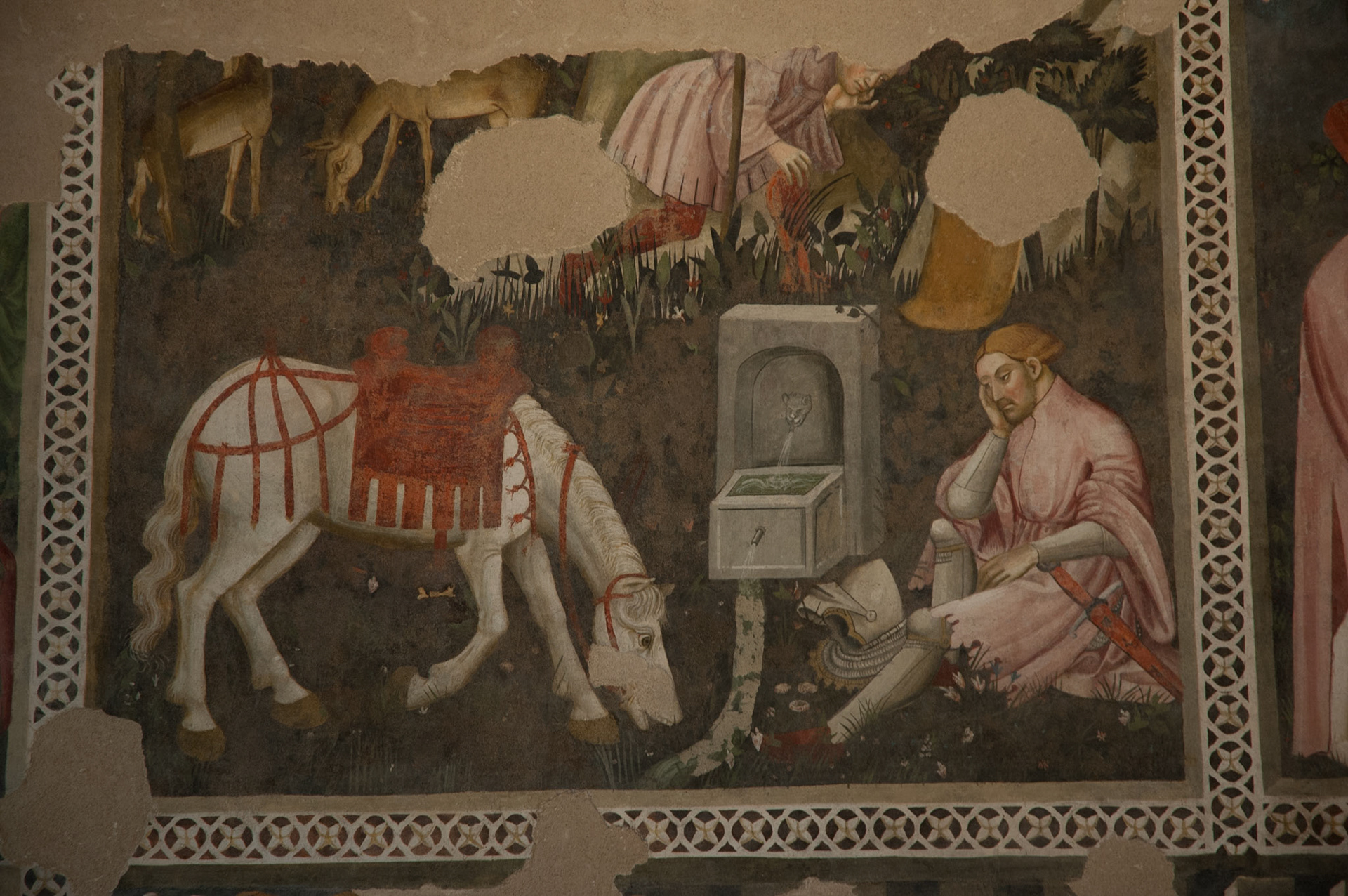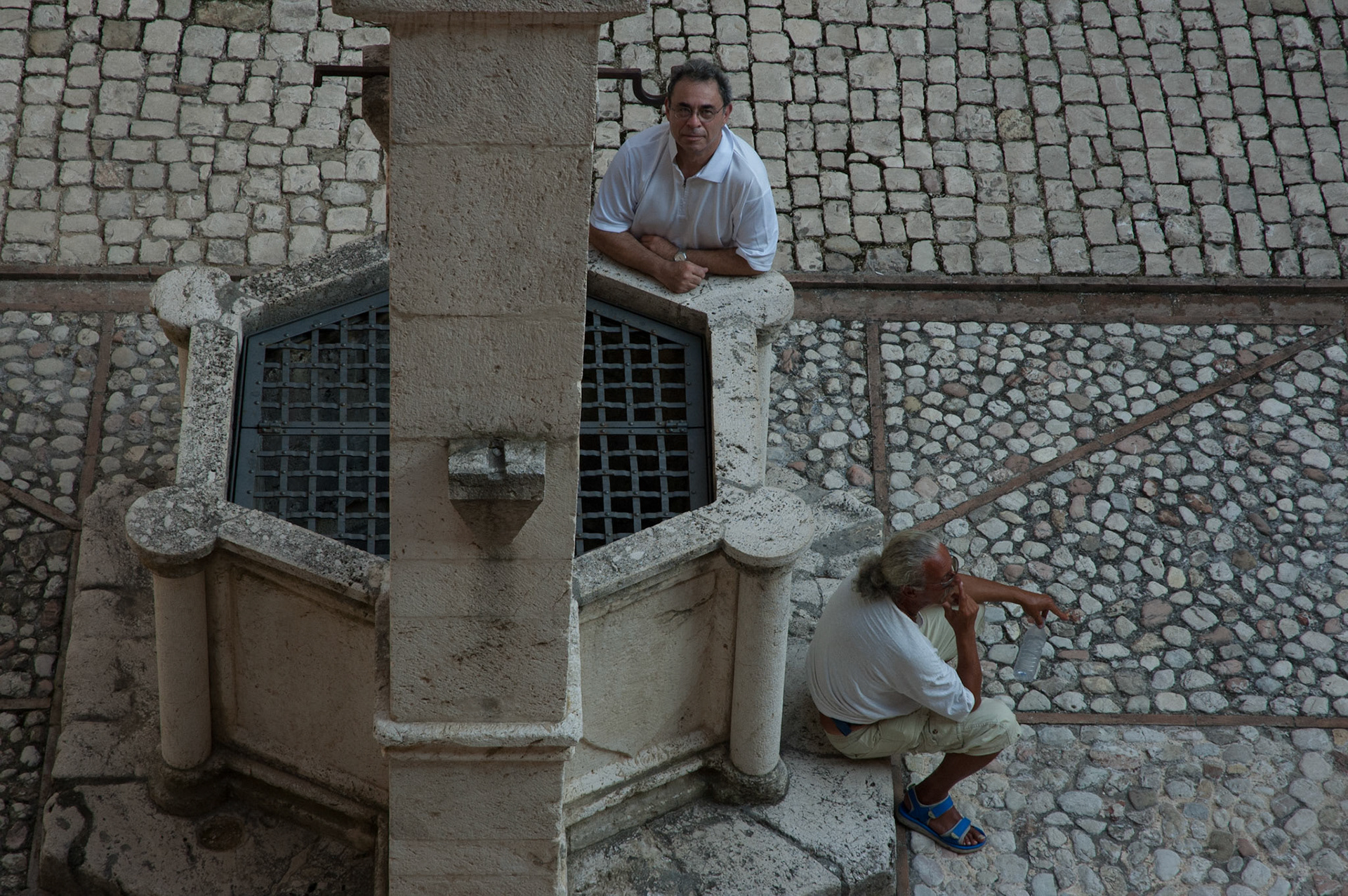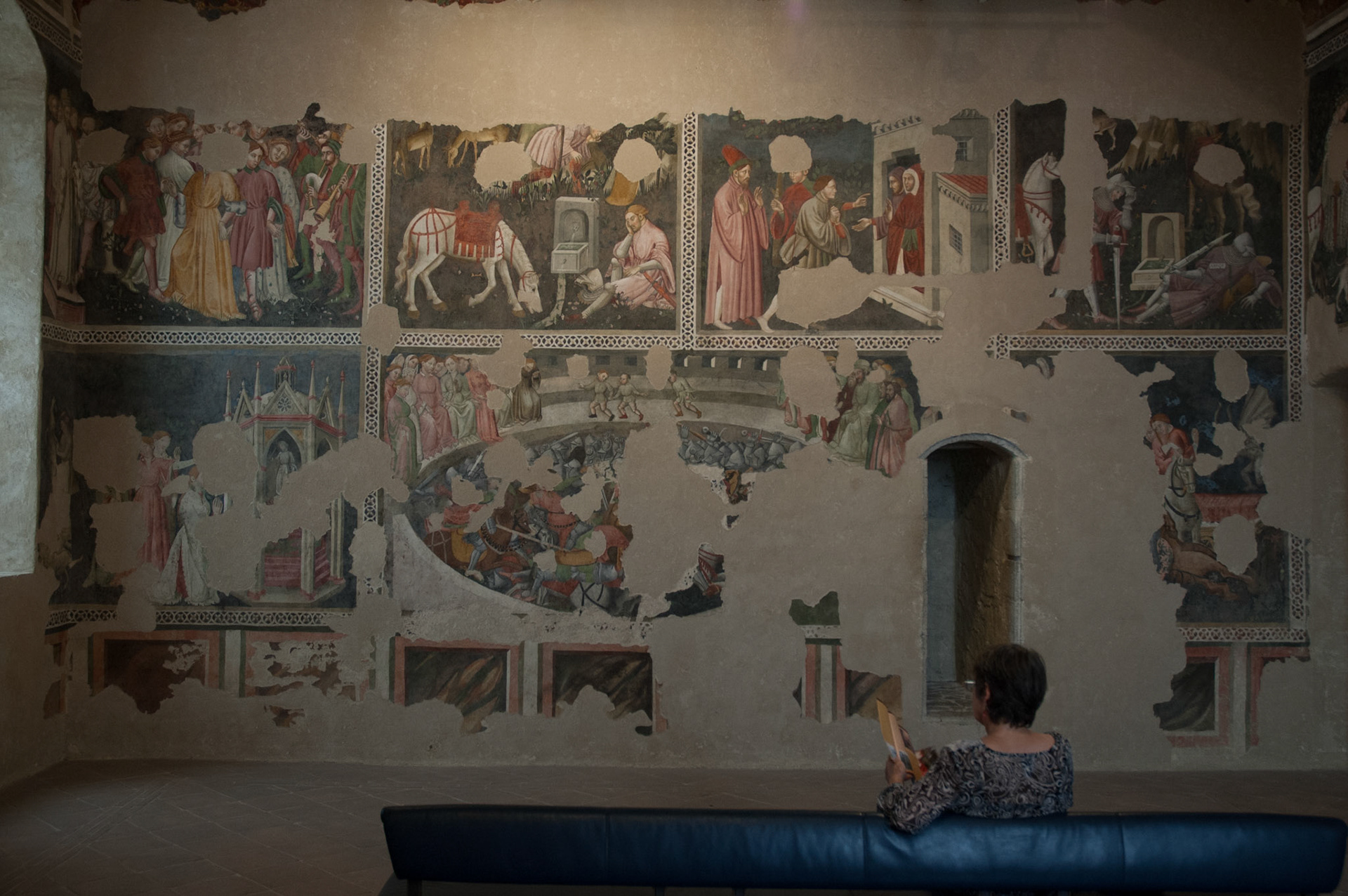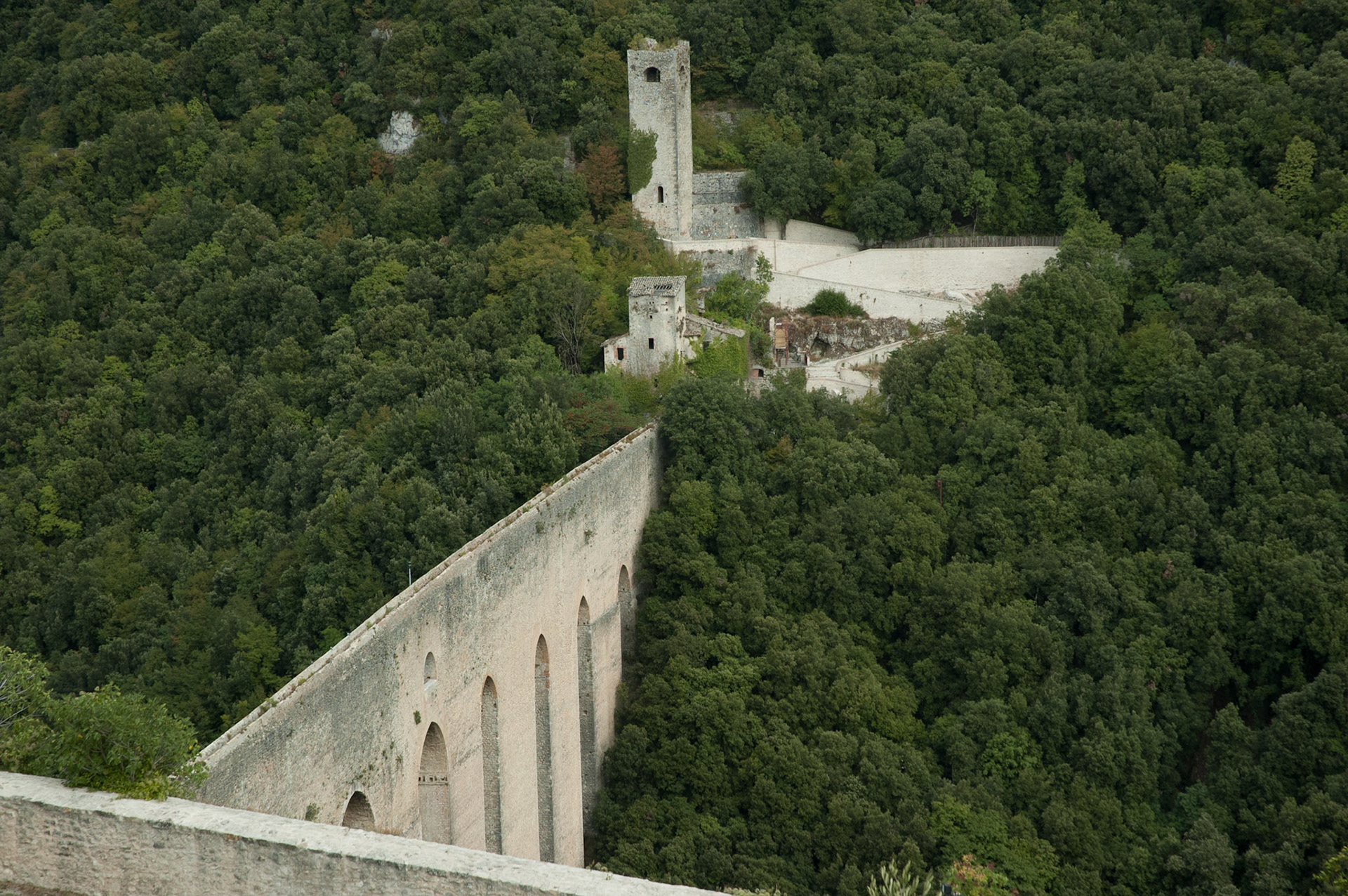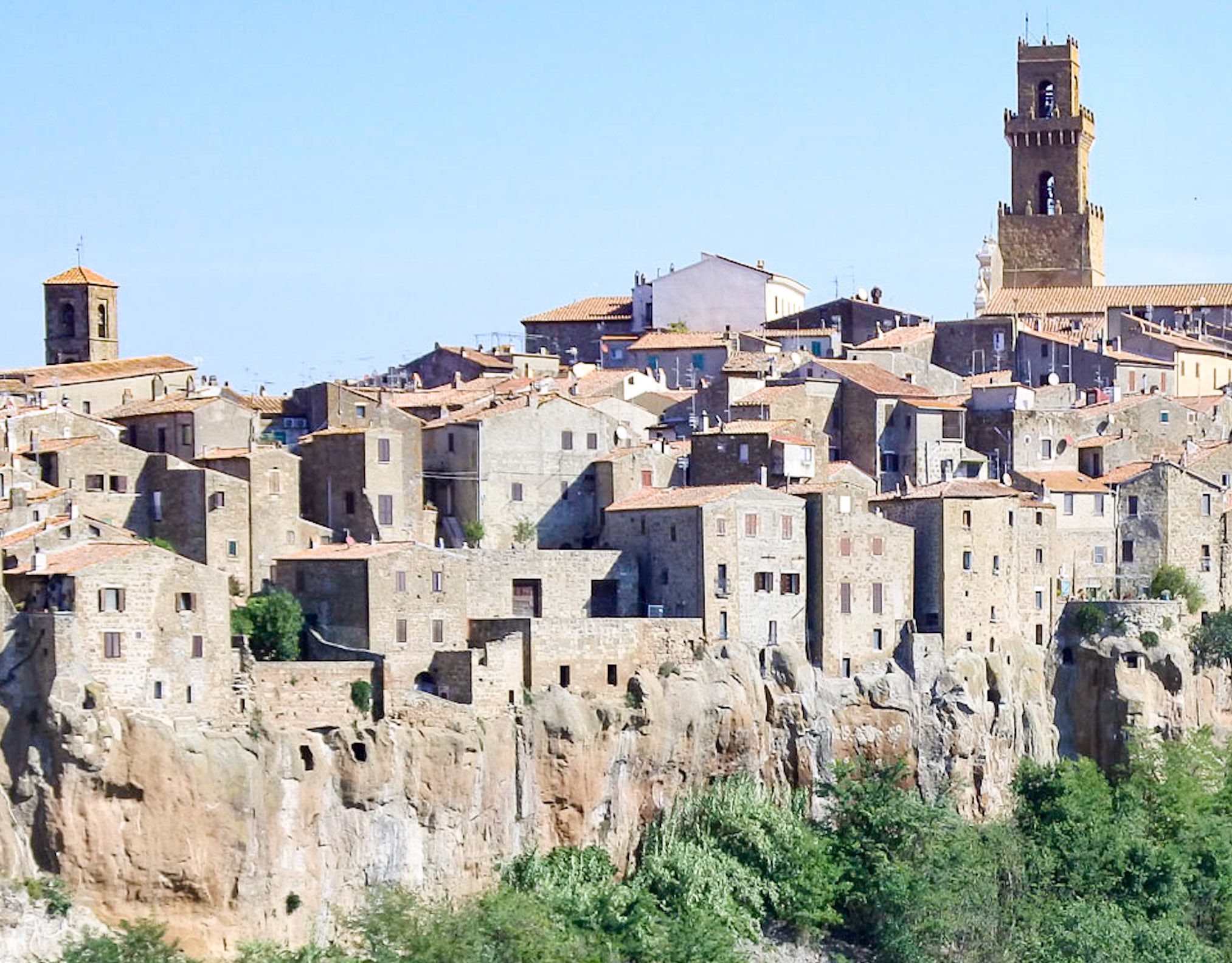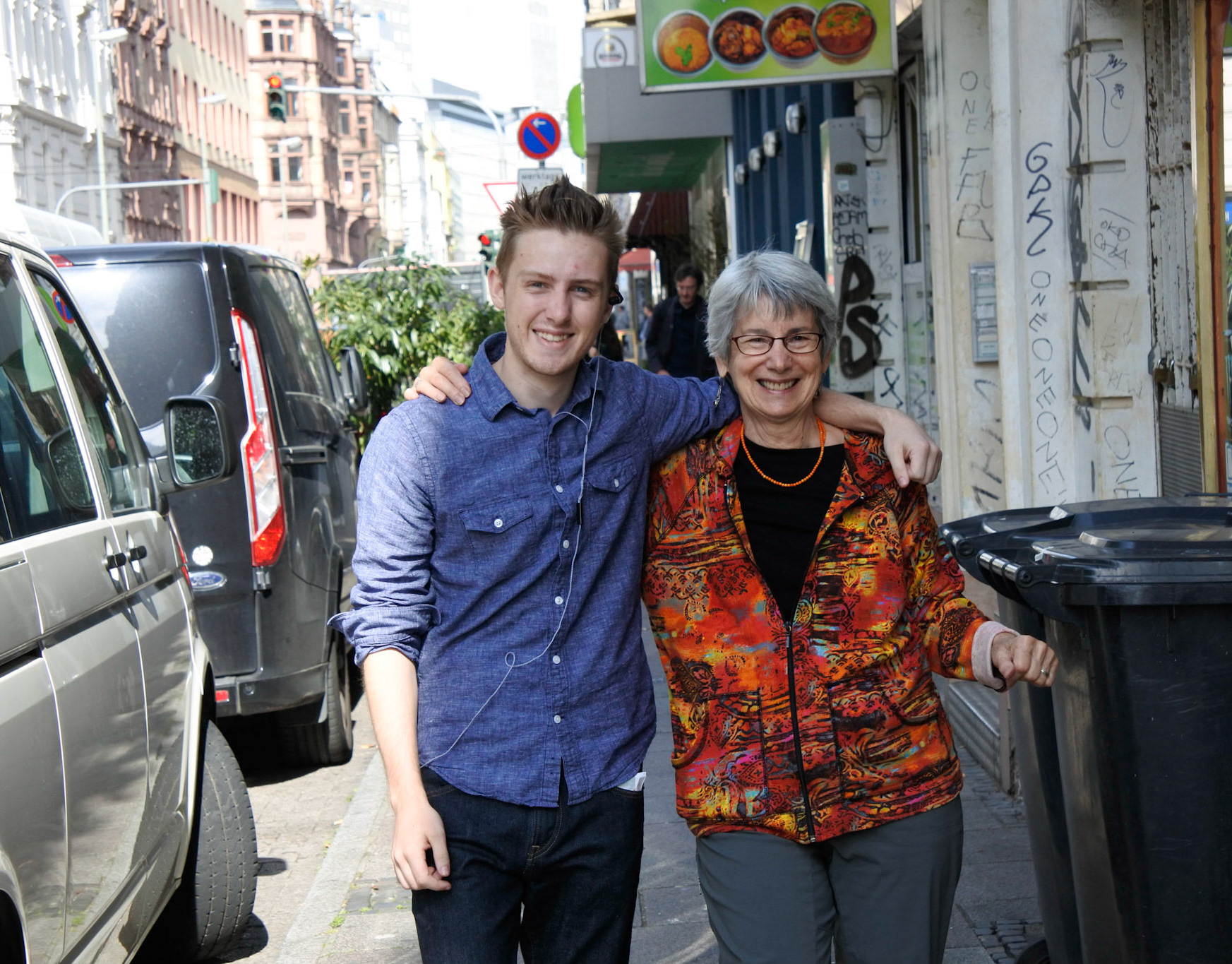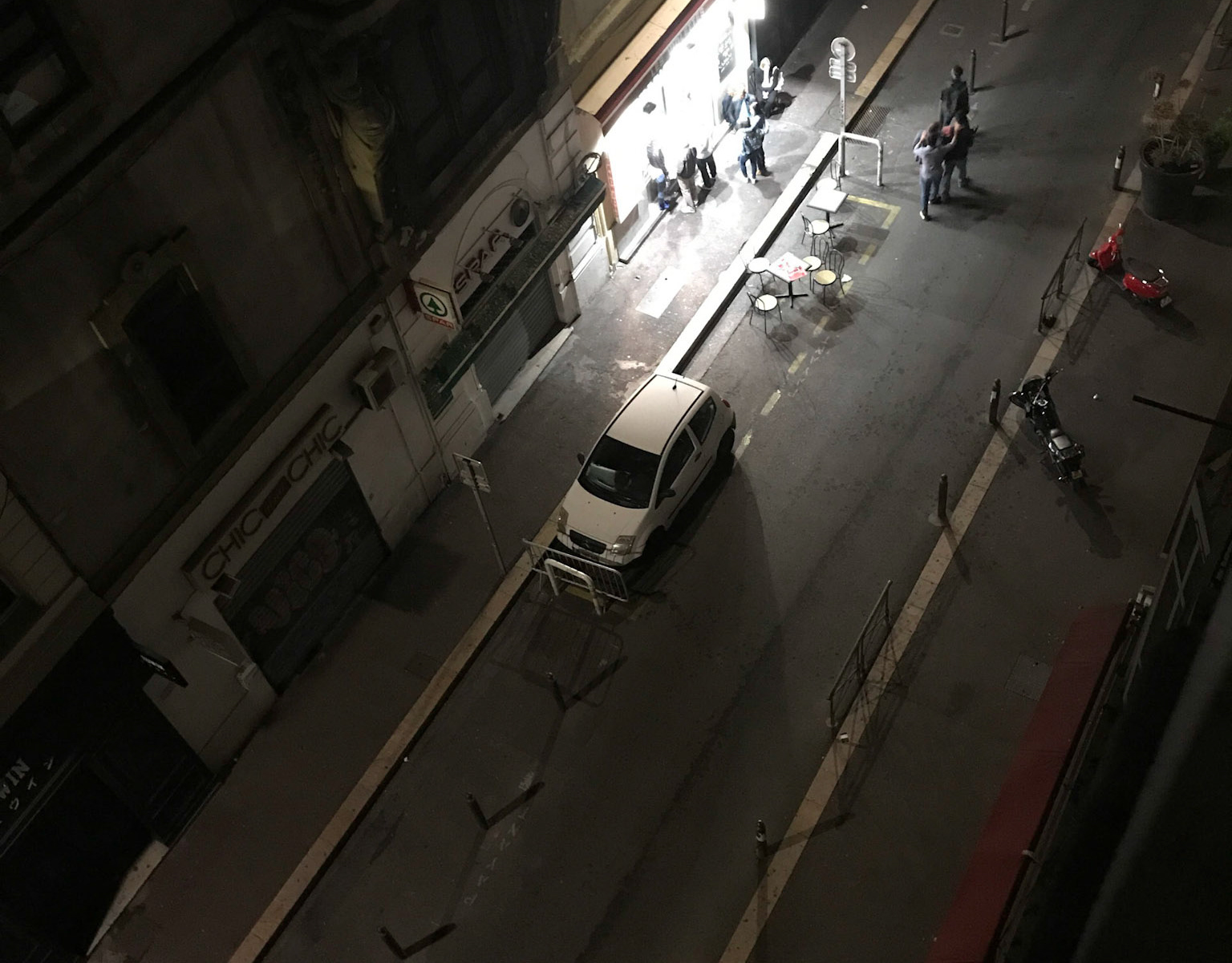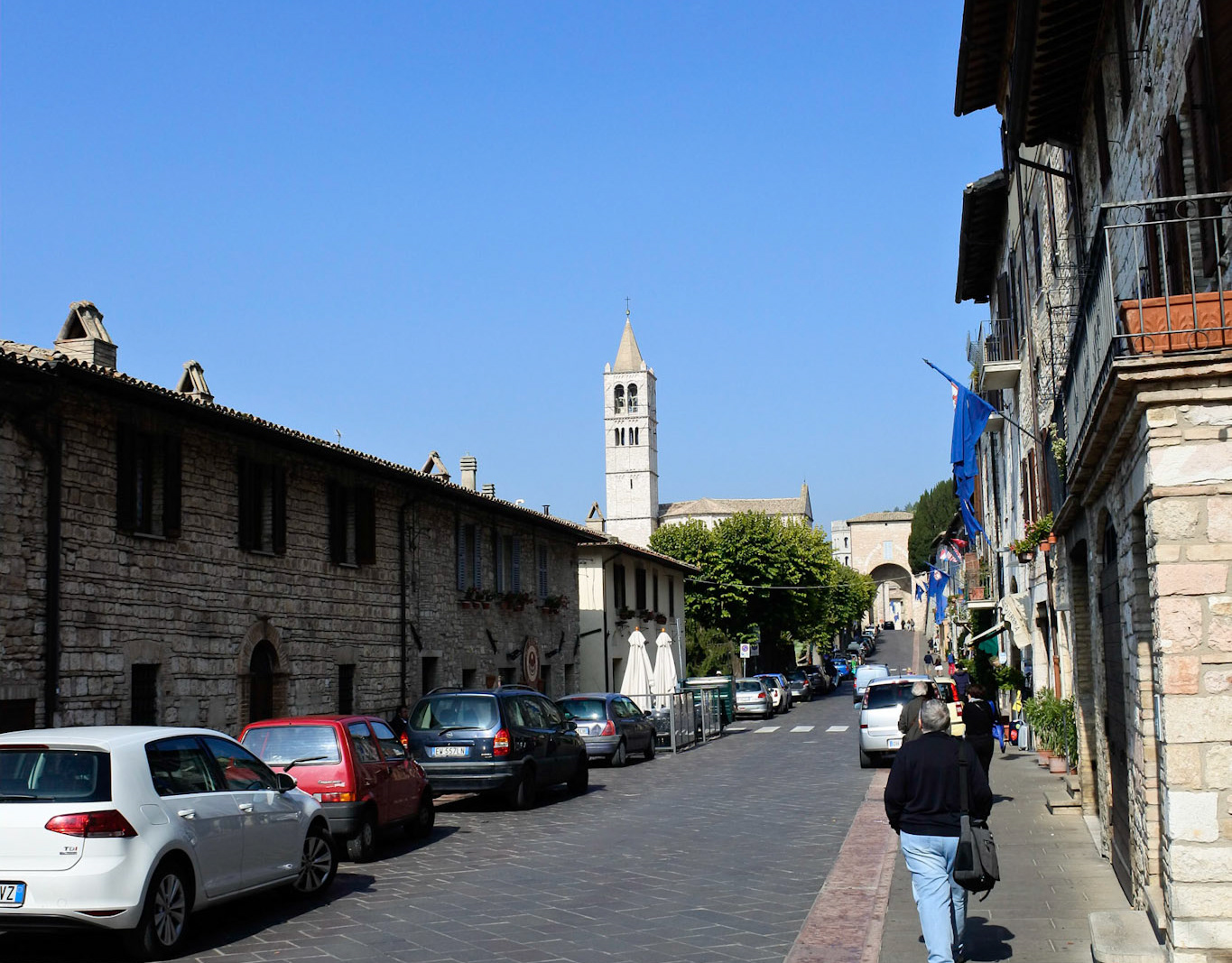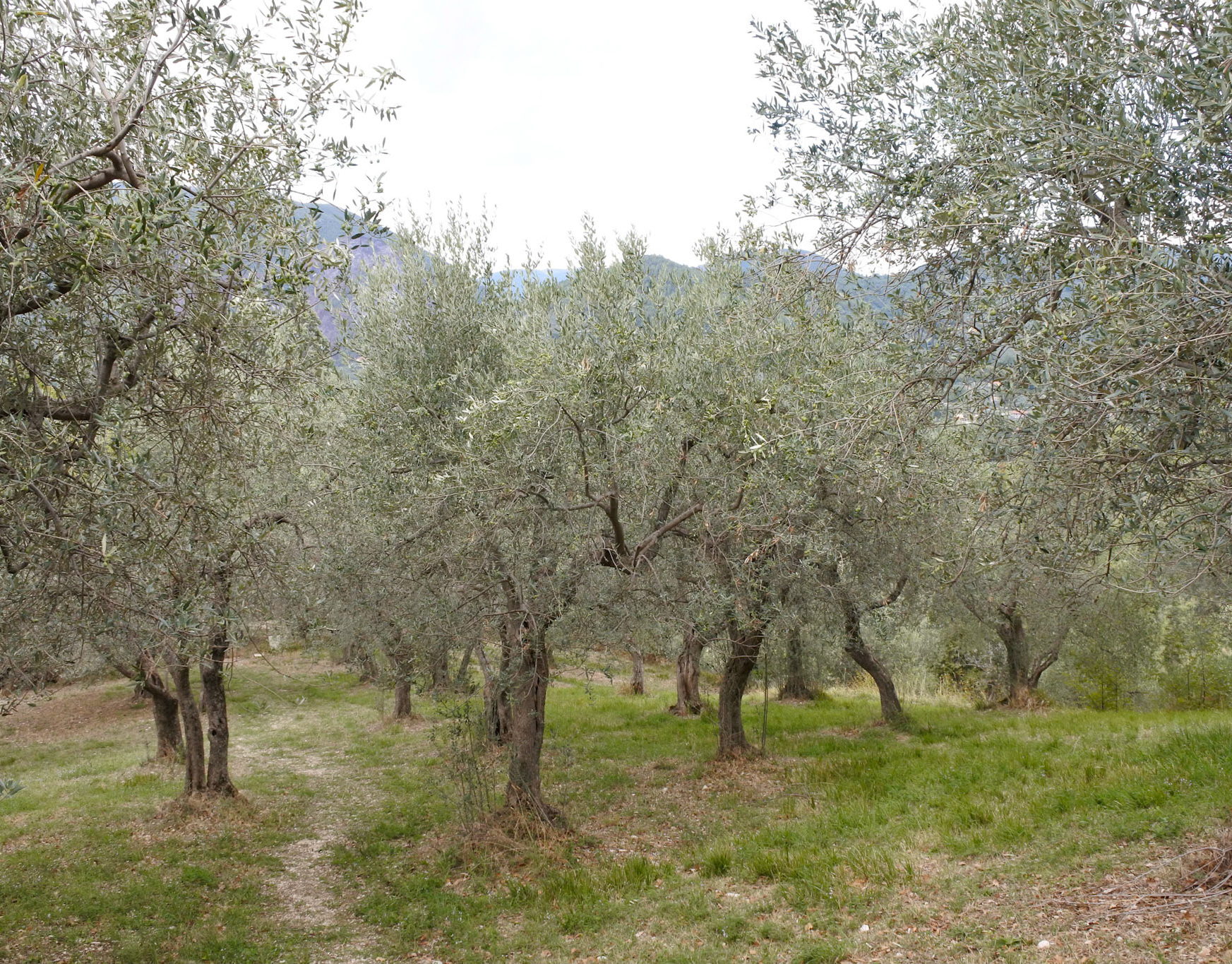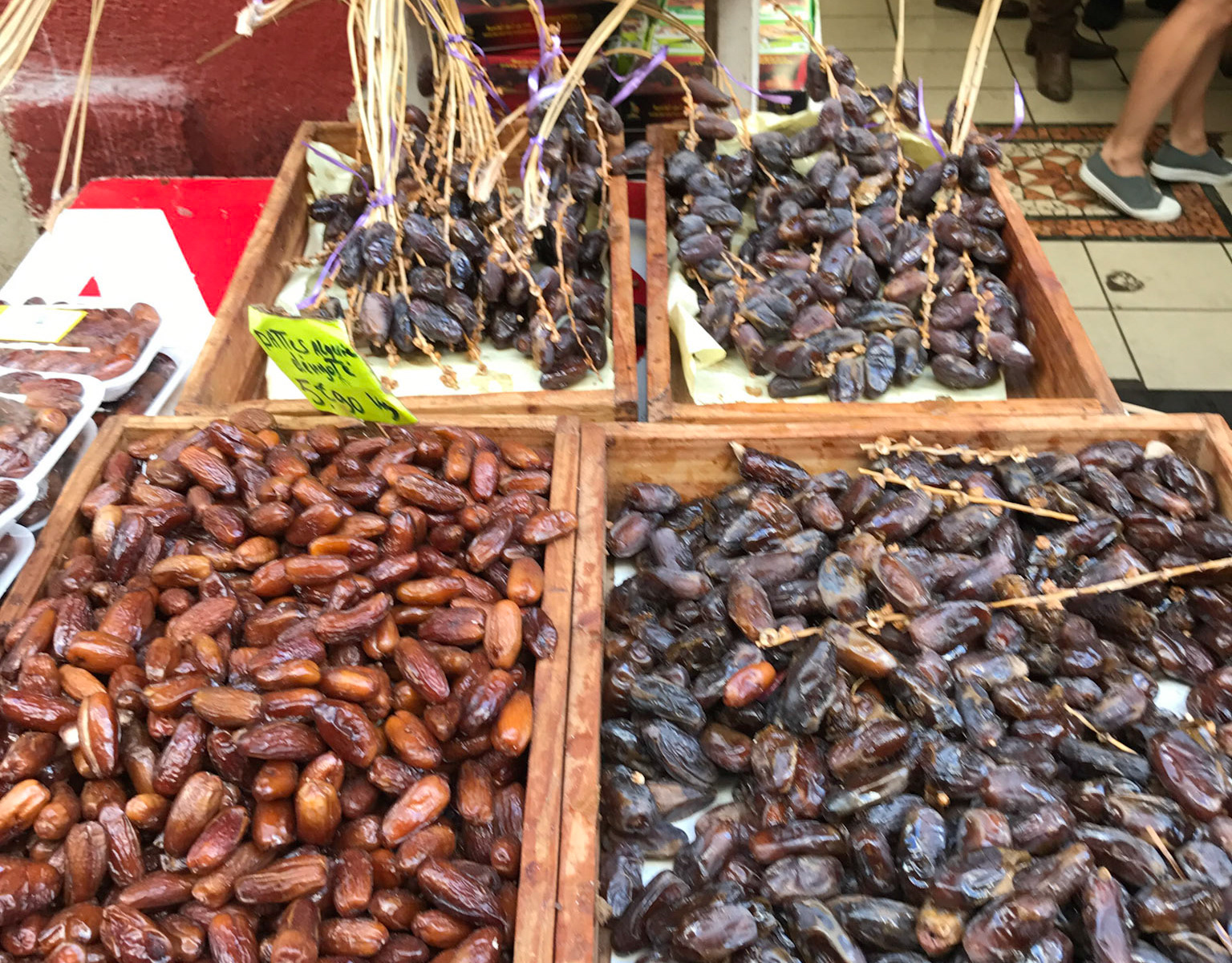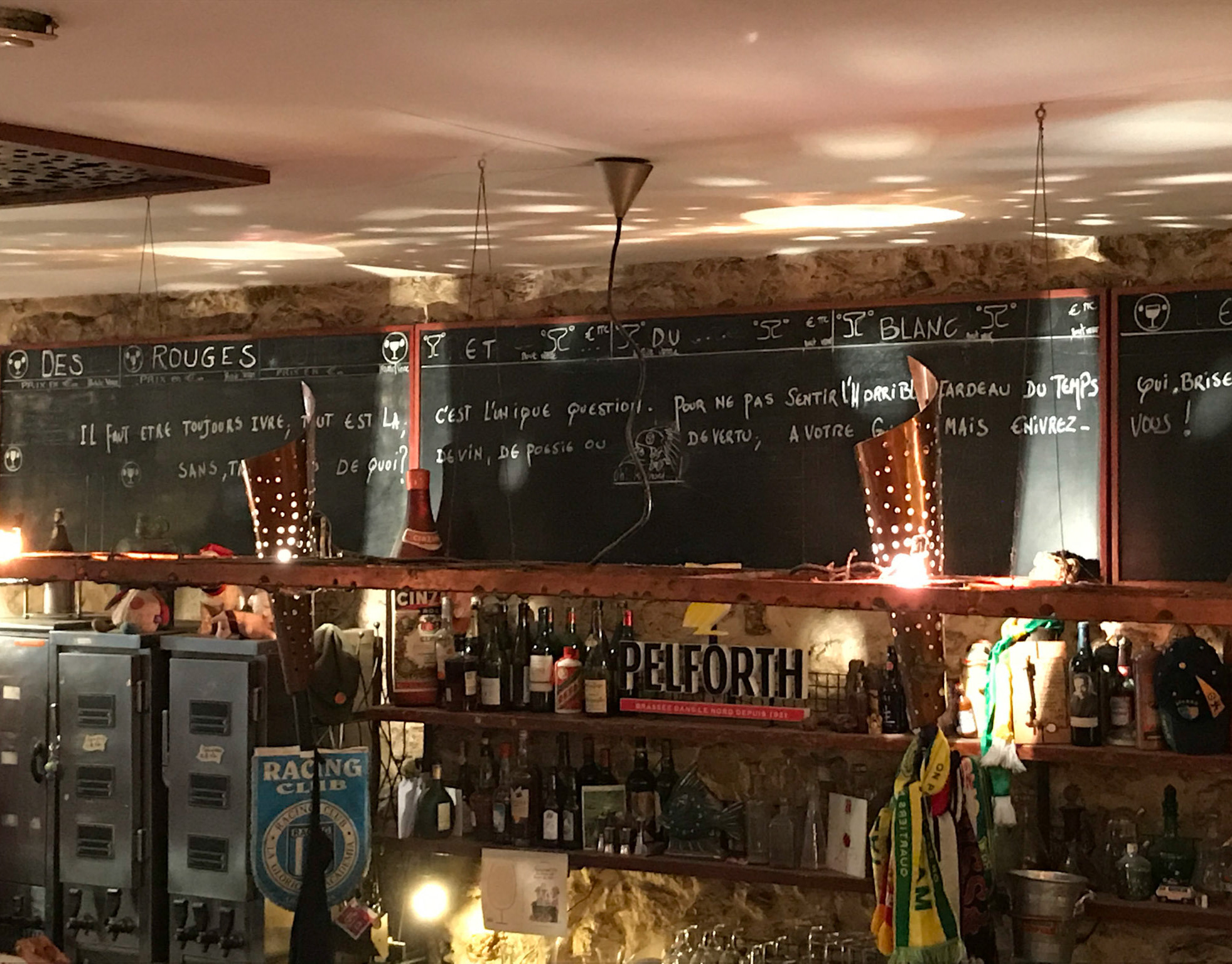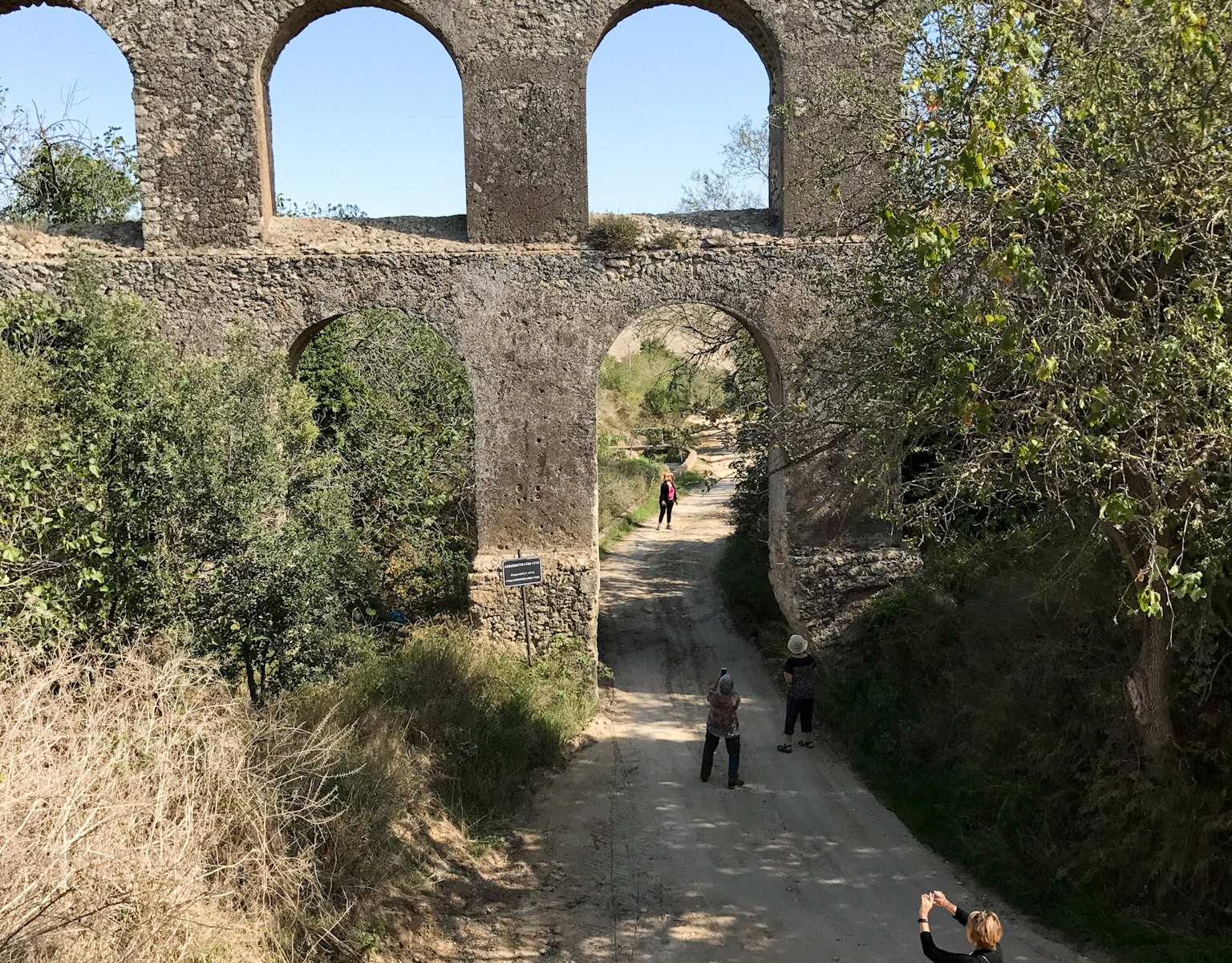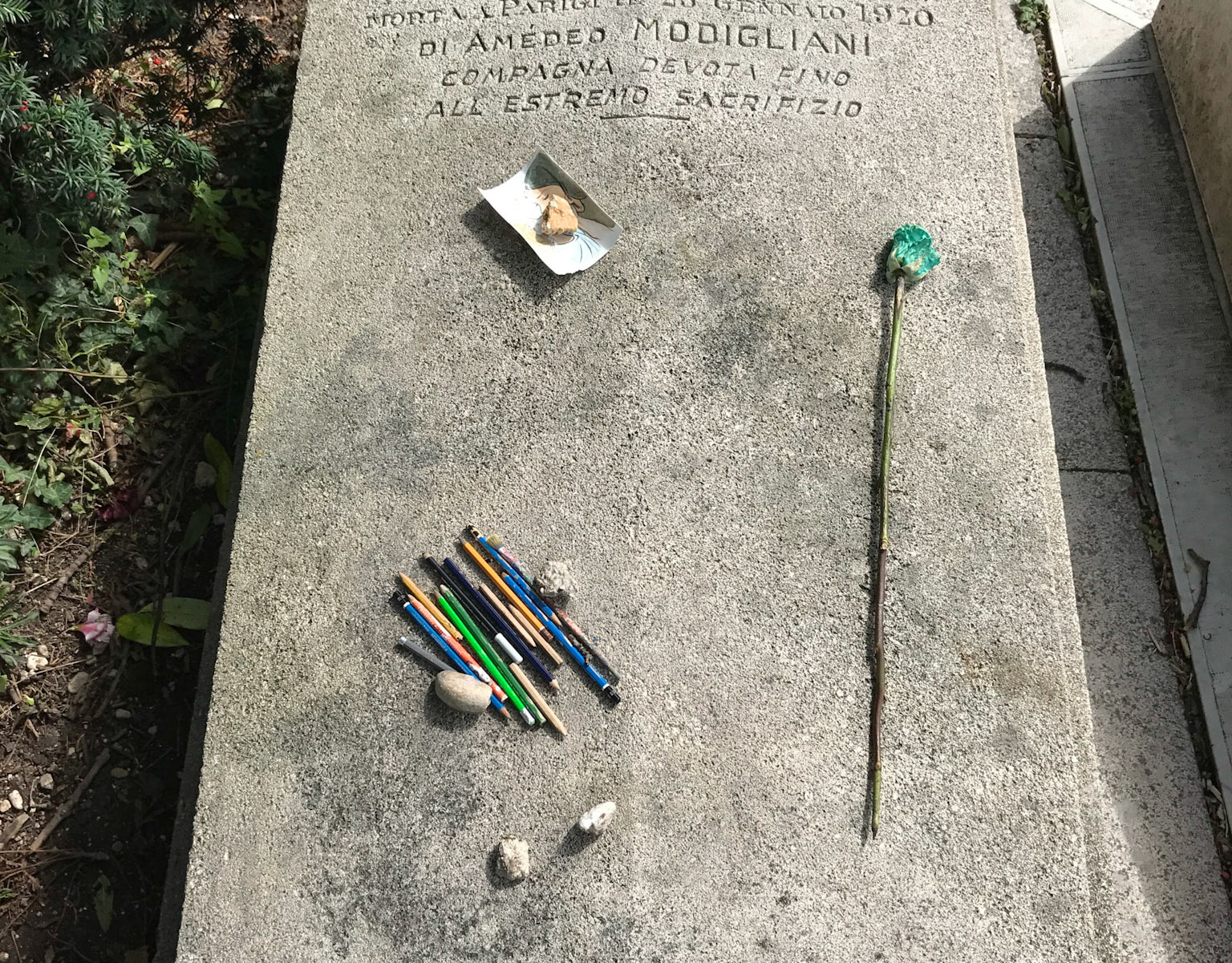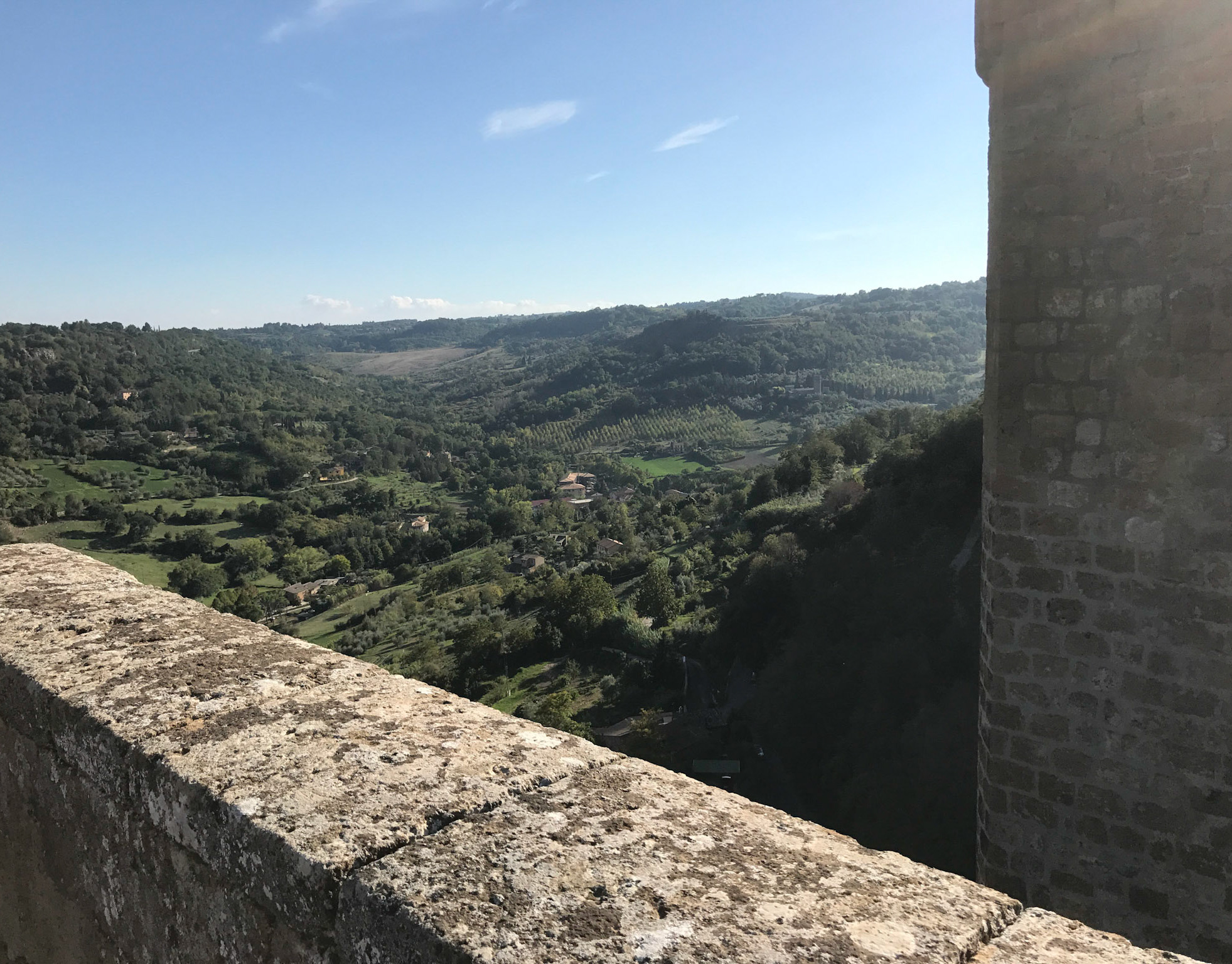Visiting Spoleto for a 2nd time was a rare pleasure. It's hard to get back to places when there are so many new ones beckoning. We'd stayed here for a couple of weeks in 2007 and loved it, but returning after the recent earthquakes had us a bit trepidatious. What would we find? What might have changed?
We were pleased to see that the town hadn't suffered as much as some others, like Norcia—which was practically destroyed—but there are cracks visible and raw repairs in place that show how fragile human history is. There appears to have been some damage to the Roman theater, which is part of the National Archeological Museum. In 2007, we were treated to an al fresco play in Italian in that theater. We even thought we understood it, but that may have been the wine thinking.
Spoleto was an important city on the road north from Rome. It occupied a position on the Via Flaminia's eastern branch. It commanded a strategic spot and its fortifications served quite a number of masters over the centuries, including the original tribes of the Umbri in the 5th century BC, the Lombard's Duchy of Spoleto (late 500s), and warring factions, such as the Guelphs and Ghibellines. The city was trashed by Frederick Barbarossa in 1155. From the city's excellent museum, we learned that the old Roman Forum now hides beneath the modern marketplace.
The Ponte delle Torri is the stunning, thin aqueduct that reaches across the valley from up by the Rocca Albornoziana fortress. We didn't hike to either this time, but the Rocca has some marvelous frescoes and a great courtyard with a well.
A big draw in most Italian hill towns is the Duomo. Spoleto's is the Duomo of Saint Maria Assunta, which was built from 1175 to 1227. It features a sweeping plaza that helps overcome the otherwise cramped feeling. Of the many cathedrals I've now visited, this one feels—inside and out—the most constipated. Like its shit doesn't quite flow. There are at least another twelve churches in town, each ass-deep in history and accessible, but without the Duomo's crowds.
Another place we hadn't the time to visit again is the restored Roman house just above the Forum Square. It's not only a living museum, with amazing mosaic floors and many rooms, it was evidently the house of Vespasia Polla, Emperor Vespasian's mom. Gives it that personal touch.
Many people know Spoleto for The Festival dei Due Mondi (The Festival of the Two Worlds), which runs for three weeks in late summer. While it might be fun, it's hard to imagine so many people there at once, all vying for housing and meals. By the times we've visited, housing is available and reasonable, there's no line at the porchetta truck, the shops are having end-of-season sales, and there's a table open on the plaza where espresso will be served while I write, sketch, read, or watch.
